About Convention 2023
Our 2023 Convention was held 8 to 10 September 2023, with our Annual General Meeting startied at 11 am on Saturday 9 September.
Convention was only open to members.
The location
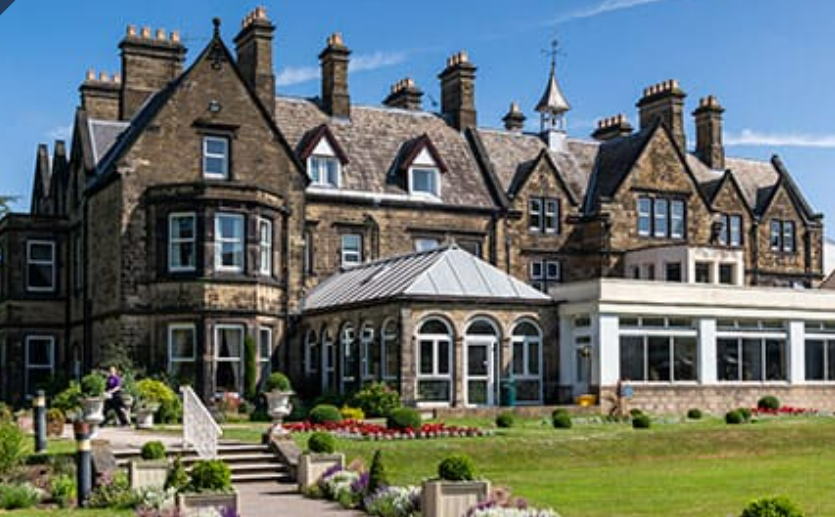
Convention is being held at The Hayes Conference Centre, Swanwick, Derbyshire DE55 1AU.
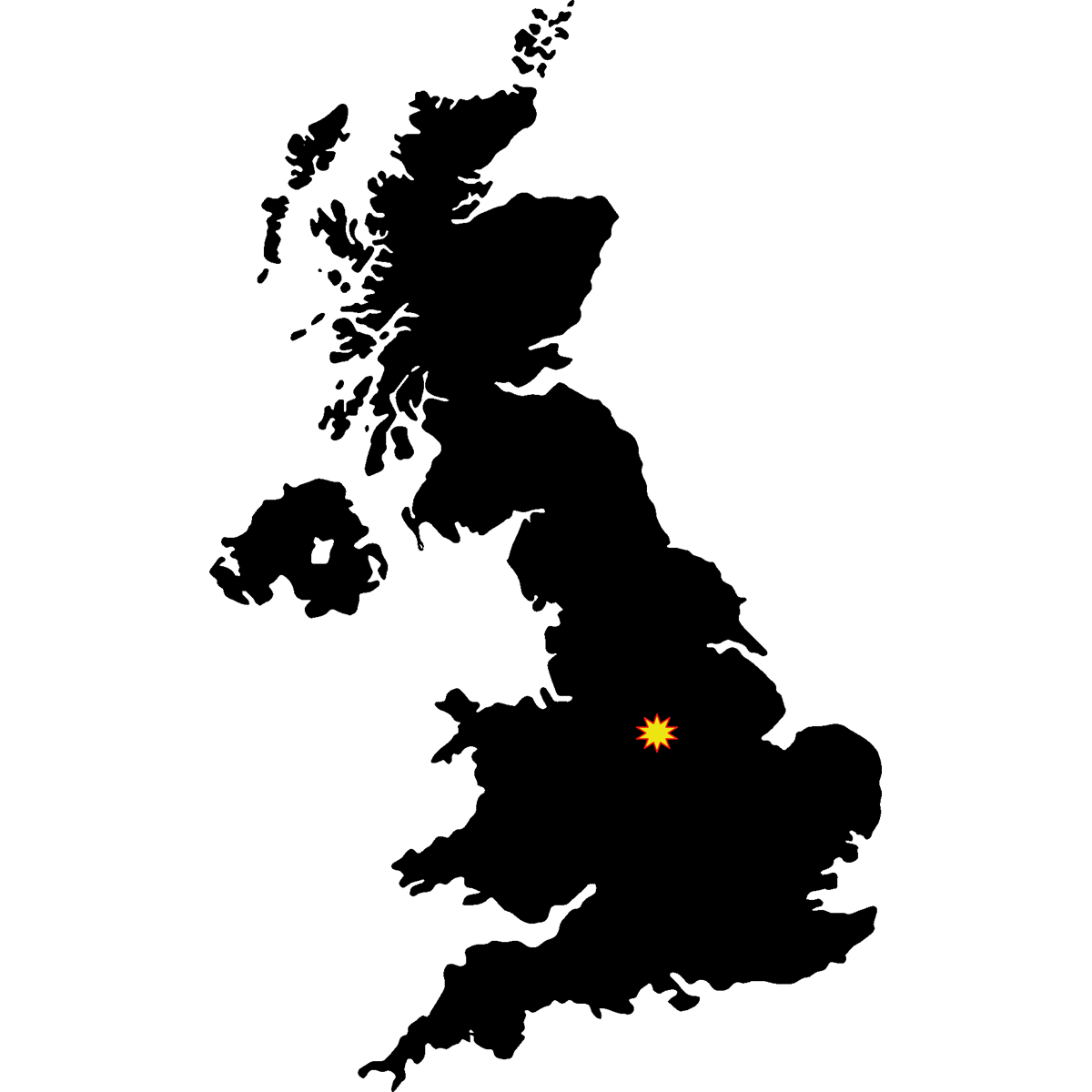
Programme
We had exciting Programme.
Structure of the weekend
| Day | Start | End | Event |
| Friday 8th | 4:00 pm | Registration | |
| 5:00 pm | 5:15 pm | Welcome and introductions | |
| 5:00 pm | 6:00 pm | Talk: Kelly Ferguson | |
| 6:00 pm | 7:00 pm | Dinner | |
| 7:30 pm | 8:30 pm | Keynote: Emma Vining | |
| Saturday 9th | 8:00 am | 9:00 am | Breakfast |
| 9:30 am | 10:30 am | Keynote: Alison Ellen | |
| 11:00 am | Noon | AGM | |
| Noon | 13:00 pm | Lunch | |
| 2:00 pm | 4:00 pm | Workshops | |
| 4:00 pm | 4:30 pm | Break | |
| 4:30 pm | 5:30 pm | Keynote: Amy Twigger-Holroyd | |
| 6:00 pm | 7:00 pm | Dinner | |
| 7:00 pm | Show & Tell Fringe events, yarn sale, market place | ||
| Sunday 10th | 8:00 am | 9:00 am | Breakfast |
| 9:30 am | Clear rooms and check out | ||
| 9:30 am | 11:30 am | Workshops | |
| Noon | 1:00 pm | Lunch | |
| 1:00 pm | 2:00 pm | Talk: Barbara Smith | |
| 2:00 pm | 2:15 pm | Closing remarks and raffle | |
| 2:15 pm | 4:00 pm | Socialising | |
| 4:00 pm | Deadline for leaving |
Using the Programme
To see the events for a particular session, please click or touch one of the shaded headings. Touching again will hide those events. This should reduce the amount of scrolling you need during Convention. You may download a PDF of the programme here.
Workshops are categorised by their craft, talks are of general interest. The craft is indicated by icons.
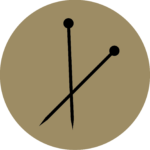
Hand knitting
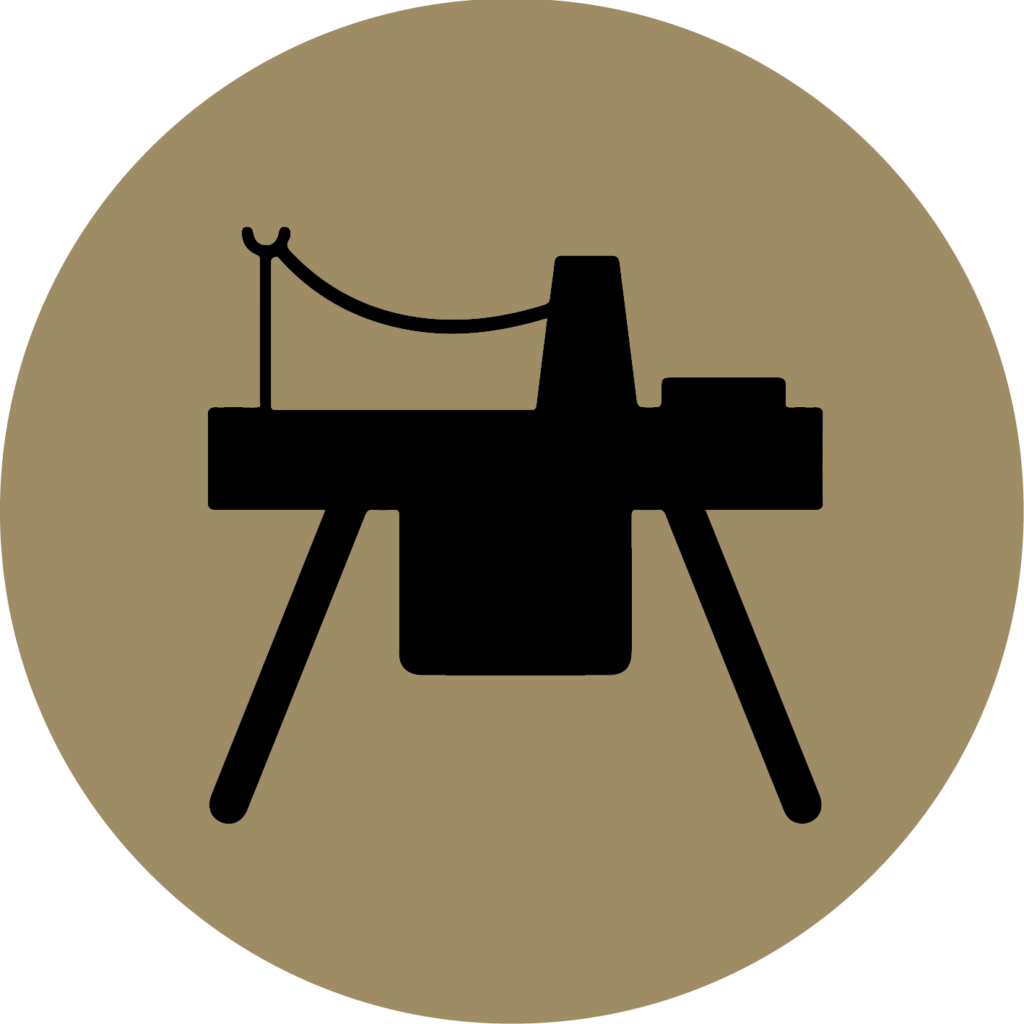
Machine knitting
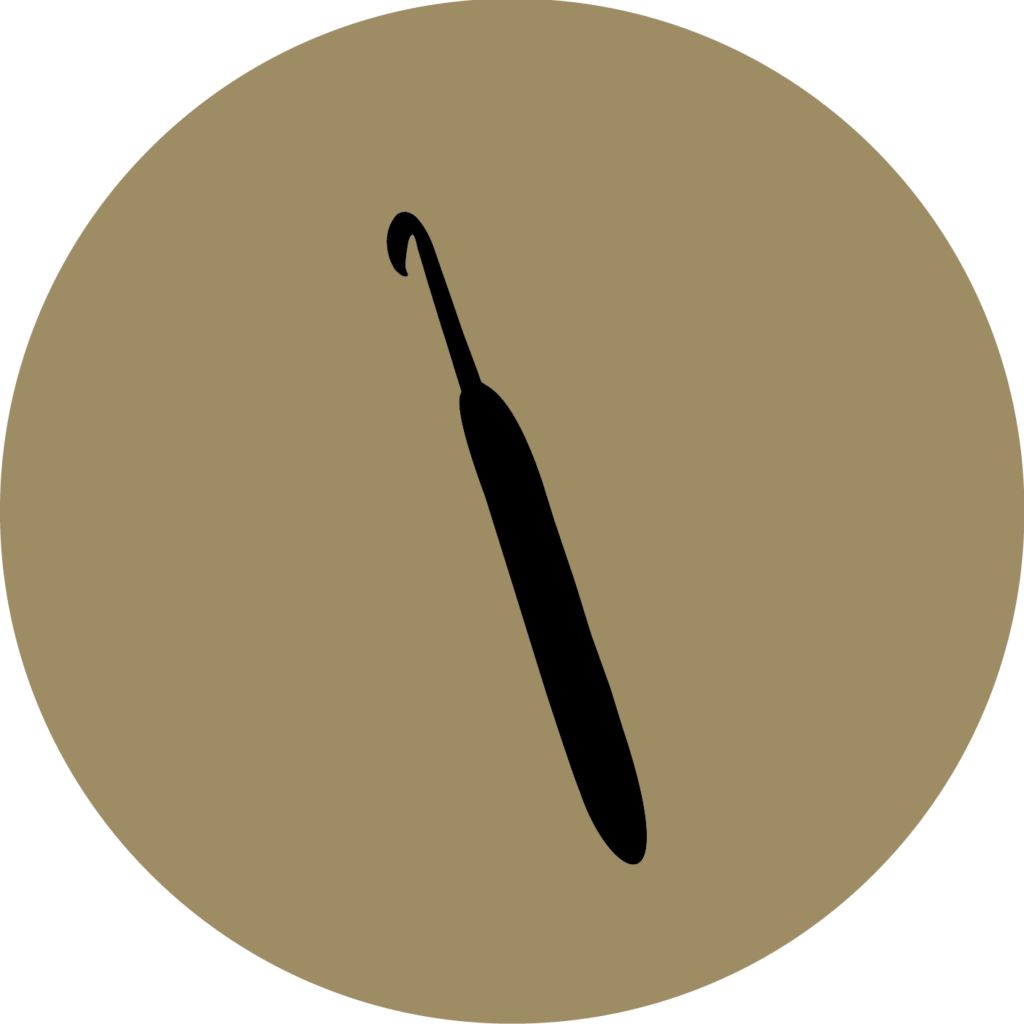
Crochet
Friday 8 September – afternoon and evening Talk and keynote (select to expand)
4 pm – Arrival and registration
Sign in at the front registration desk to get your room key, and then register with the Convention team in the area between the foyer and the bar.
5 pm – 5:15 pm – Opening of Convention

Room

Welcome and Introductions
5:15 pm – 6:00 pm – Talk and exhibition

Room
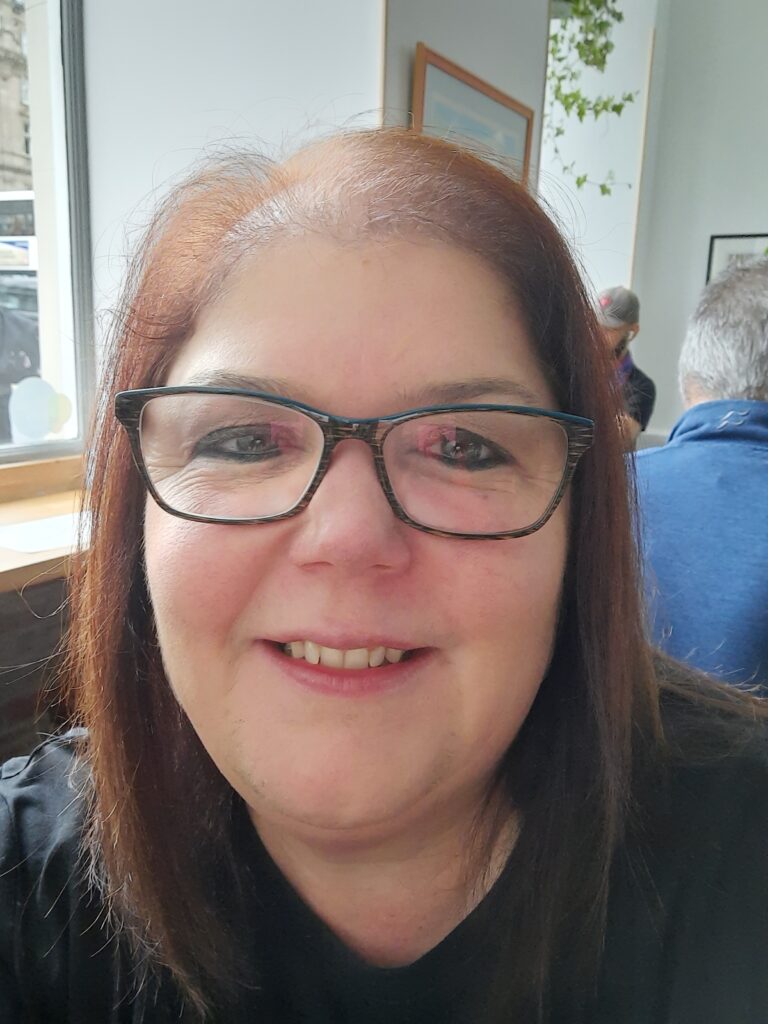
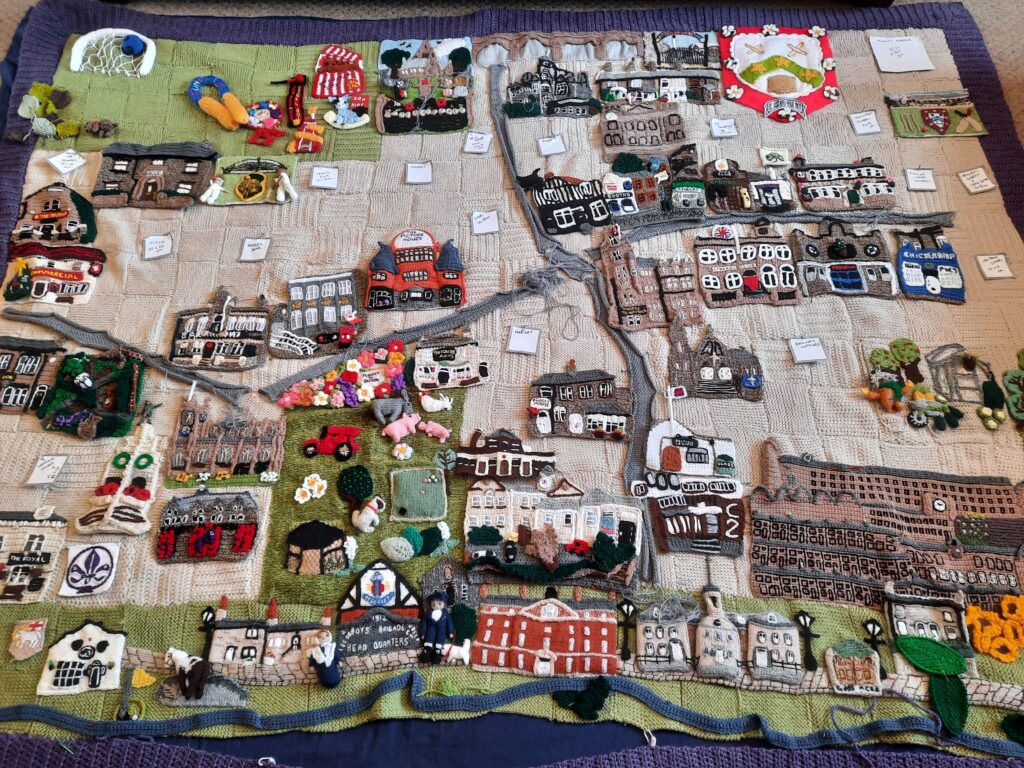
The Pudsey Blanket
Kelly Ferguson
Description
Knitted Pudsey began life in late 2021 when Kelly Ferguson brought together a group of yarn craft enthusiasts in Pudsey to create a giant knitted and crocheted map of the town. Pudsey is a town mid way between Leeds and Bradford which has a rich heritage in the spinning, weaving and textile trade, so a re-creation in yarn seemed appropriate.
Kelly had previously been involved with Knitted Leeds which was organised by Nick and Natasha Milton of Spring Into Wool and you may have seen Kelly giving a talk about it at the 2020 Unconvention.
Both Knitted Pudsey and Knitted Leeds are part of a wider project called Knit Your Town Project which is the brainchild of Sue Howell who started the project with Knitted Newbury. The maps are approximately 7 feet wide by 5 feet high and are built onto a backing base of 315 squares of 10cm. Created mainly in acrylic materials to ensure longevity, the maps contain around 40 local landmarks, personalities and historical references in yarn form.
Local schools were involved whereby the children ran a competition to design a square, with the winning design being recreated by the creative group.
Knitted Pudsey took approximately 18 months to create and was launched on Yorkshire Day (1st August) 2023, being displayed in a local yarn shop and will in the long term be on display for the local community to view.
About the speaker
Kelly Ferguson is a self confessed craft addict, enjoying both yarn and fabric crafts. She was taught to knit at a young age by her gran who was a prolific knitter. She much prefers crochet, she is self taught, using a variety of sources such as online tutorials and books as well as well as taking the International Crochet Diploma. In the twelve years she has been crocheting, she has enjoyed learning the variety of techniques, her favourites being Tunisian and Mosaic crochet. She joined the Knitting and Crochet Guild about four years ago and is currently the Leeds Central Branch Co-ordinator.
6 pm – 7 pm – Evening Meal
7:30 pm – 8:30 pm – Friday Keynote

Room
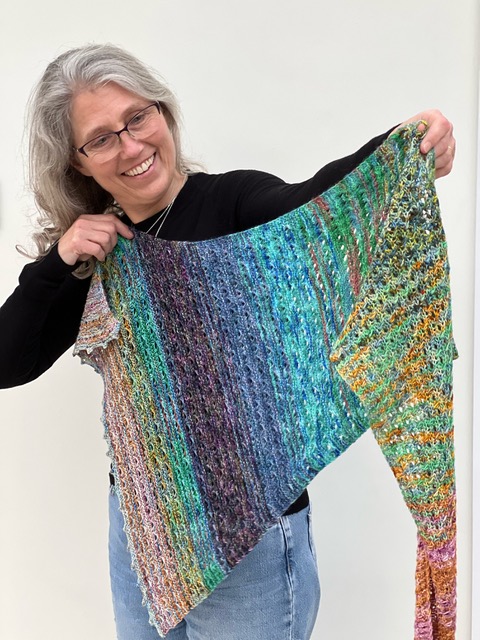
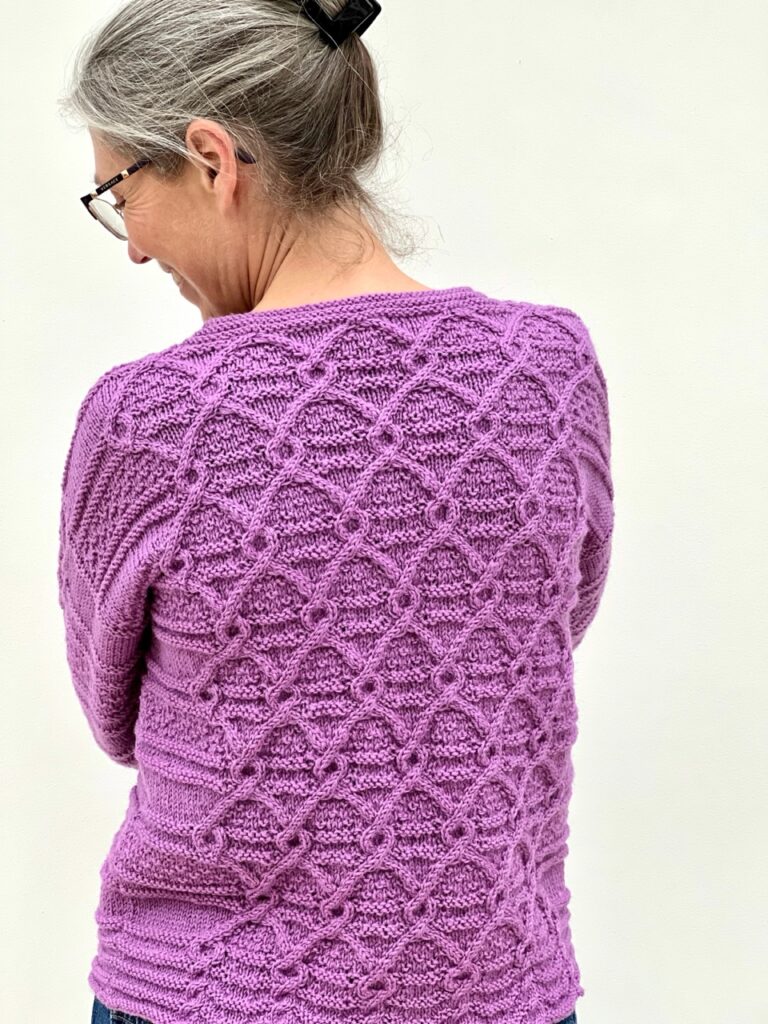
Collecting Patterns: Design inspiration from the world around us
Emma Vining
www.emmavining.com
Description
Emma’s design inspiration comes from many diverse sources and she loves working with a wide variety of textures and cables that provide plenty of contrast in her knitting. In this keynote talk for Convention 2023, Emma will describe how she collects pattern inspiration from both the natural world and the built environment, and how she uses these ideas to develop her original hand knitting designs.
About the speaker
Emma Vining is a hand knitting designer with a passion for all aspects of knitting and design. Her knitting patterns regularly feature in The Knitter and Knitting magazines and she enjoys working on design collaborations with independent yarn companies. She is the author of A Knitter’s Sketchbook: Design Inspiration for Twists and Cables and A Knitter’s Guide to Shawl Design, both published by the Crowood Press.
You can find Emma’s designs on her website, www.emmavining.com, and on Instagram and Twitter, as Purlemma. Her patterns are available on Ravelry, LoveCrafts and Payhip.
Saturday 9 September – morning Keynote and AGM (select to expand)
9:30 am – 10:30 am – Keynote

Room
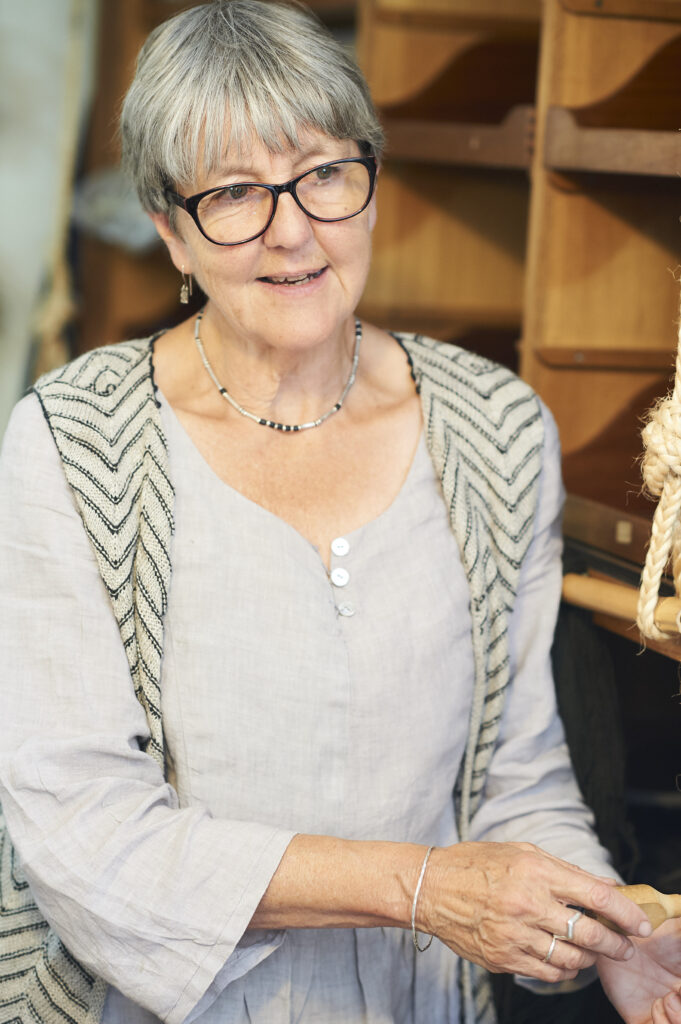
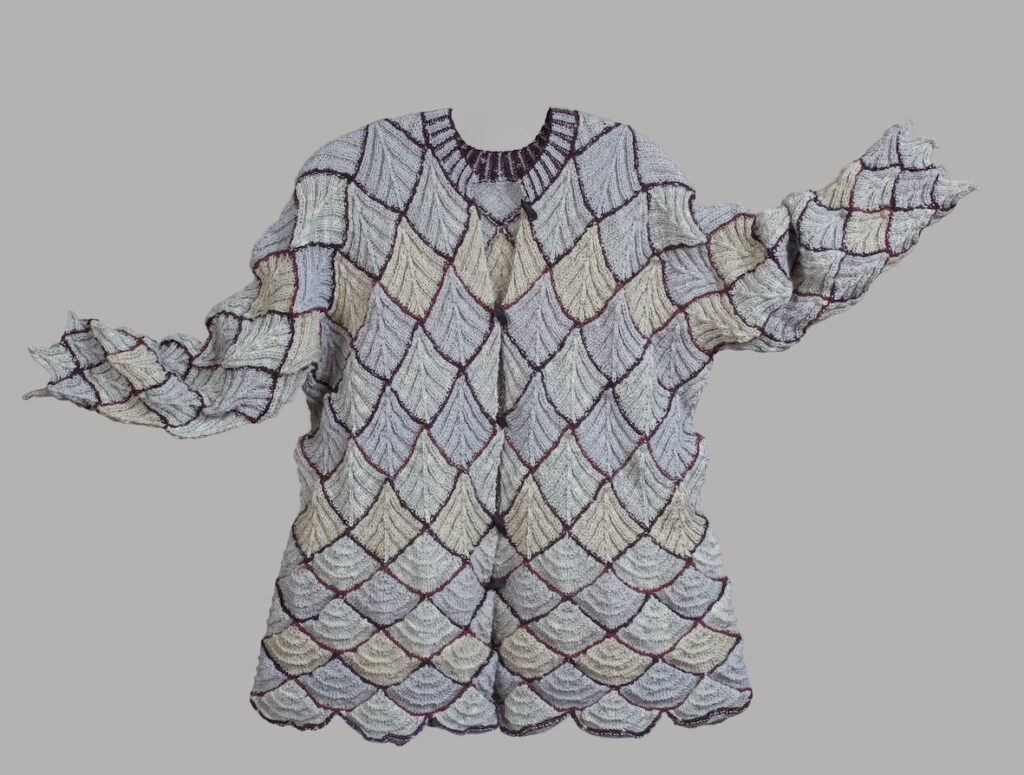
Shaping Knitting: how different stitches alter the knitted fabric
Alison Ellen
www.alisonellenhandknits.co.uk
Description
This talk and Alison’s latest book explore how stitches alter the width and length of knitted fabric, from knit and purl, bias knitting, cables and crossovers to (less obviously) different methods of colour knitting.
About the speaker
Alison has run a small business designing, producing and selling hand knits since the 1980s with the help of knitters in the UK, dyeing her own yarns to produce a rich range of colours.
Having trained in textiles, she approaches knitting as a way of making a fabric and building a seamless garment. She enjoys the challenge of creating pieces that will be a joy for every body to wear (we are all different!), an important aspect highlighted by interactions with customers at craft fairs.
She shares her ideas in the UK and abroad through exhibitions, lectures, teaching and her books, encouraging people to experiment with knitting and have confidence in exploring and designing.
11:00 am – 12:00 pm – AGM

Room
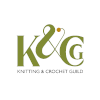
Annual General Meeting
Chair: Dianne Chan
Documents for the Annual General Meeting will be available closer to the event.
Saturday 9 September – afternoon Workshops and keynote (select to expand)
2:00 pm – 3:55 pm – Workshops (includes 25 minute break)
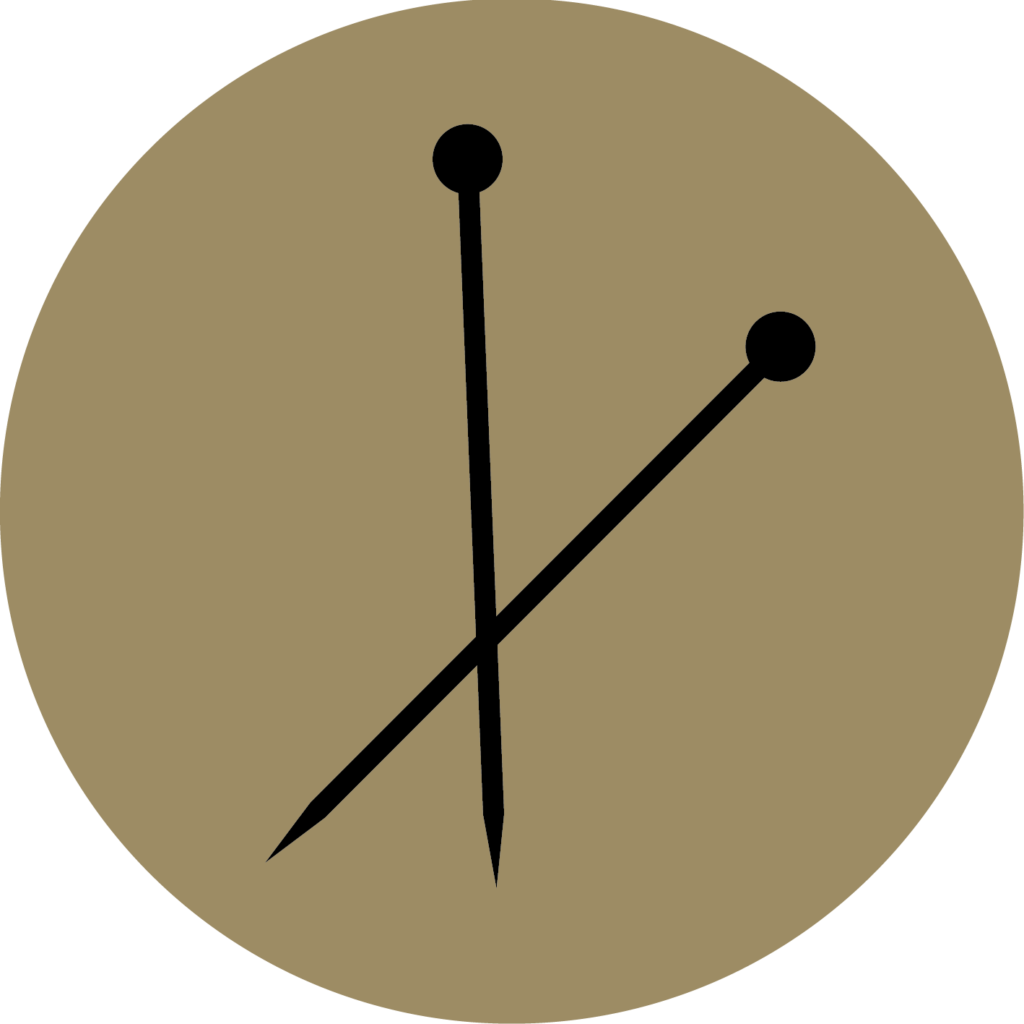
All levels
Room

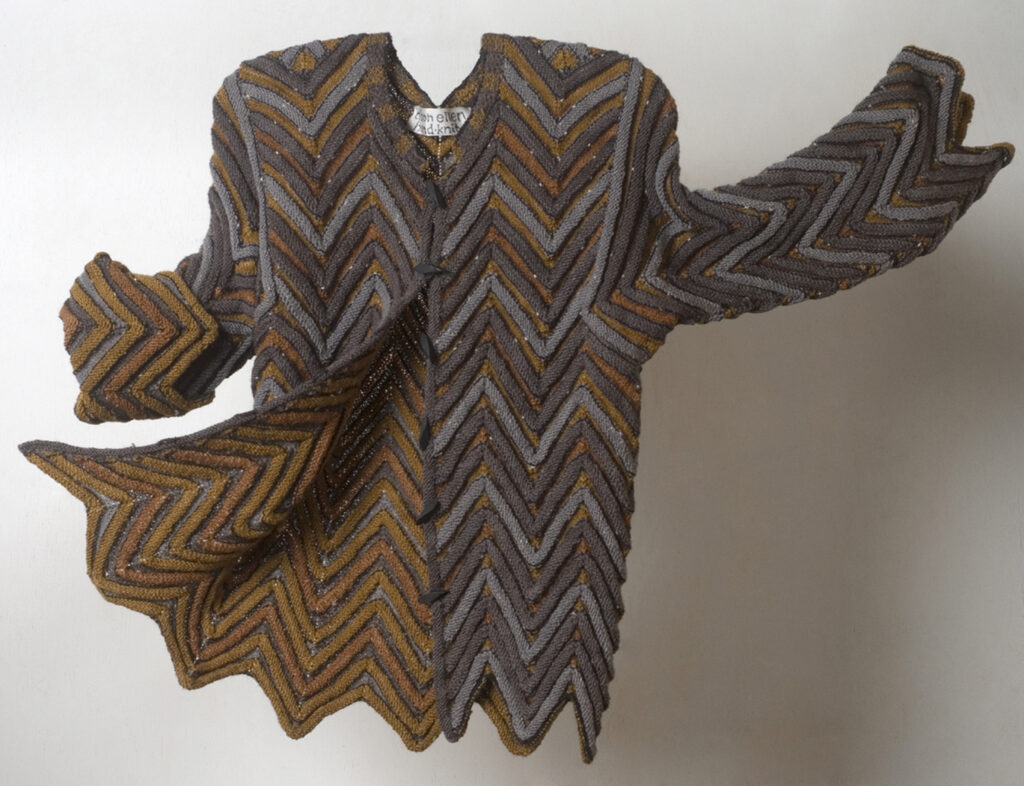
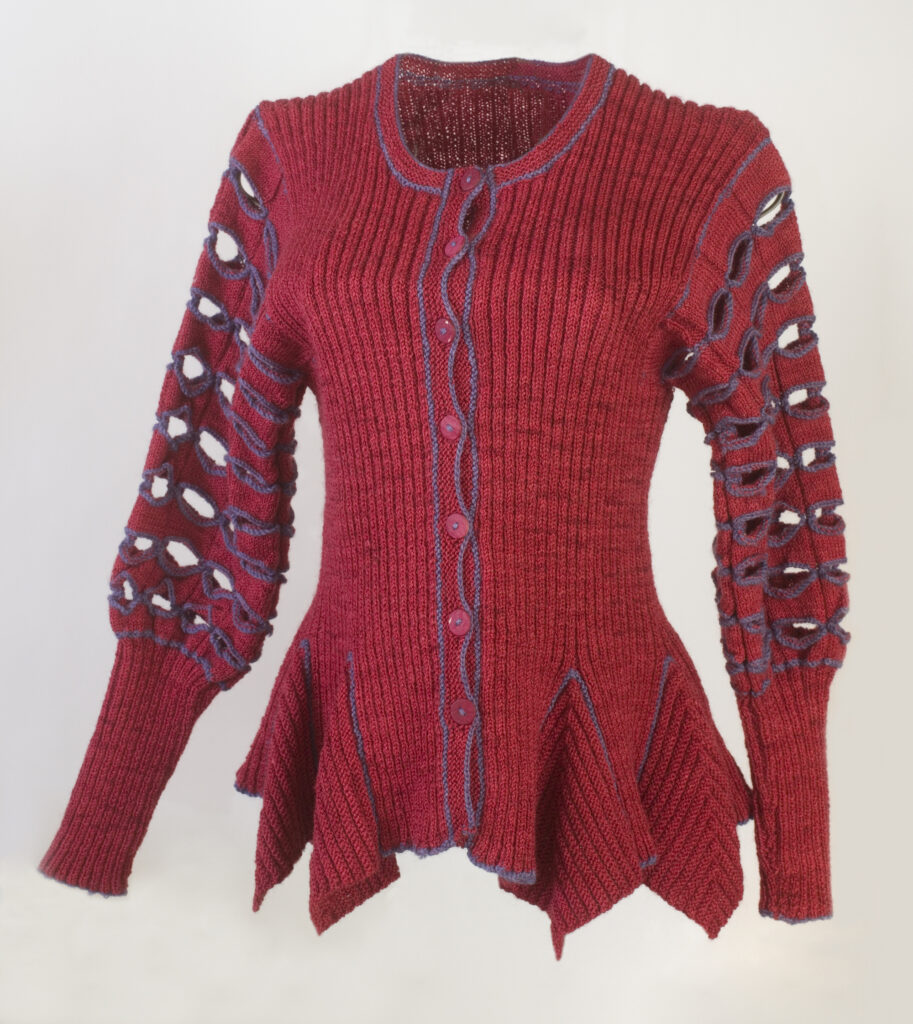
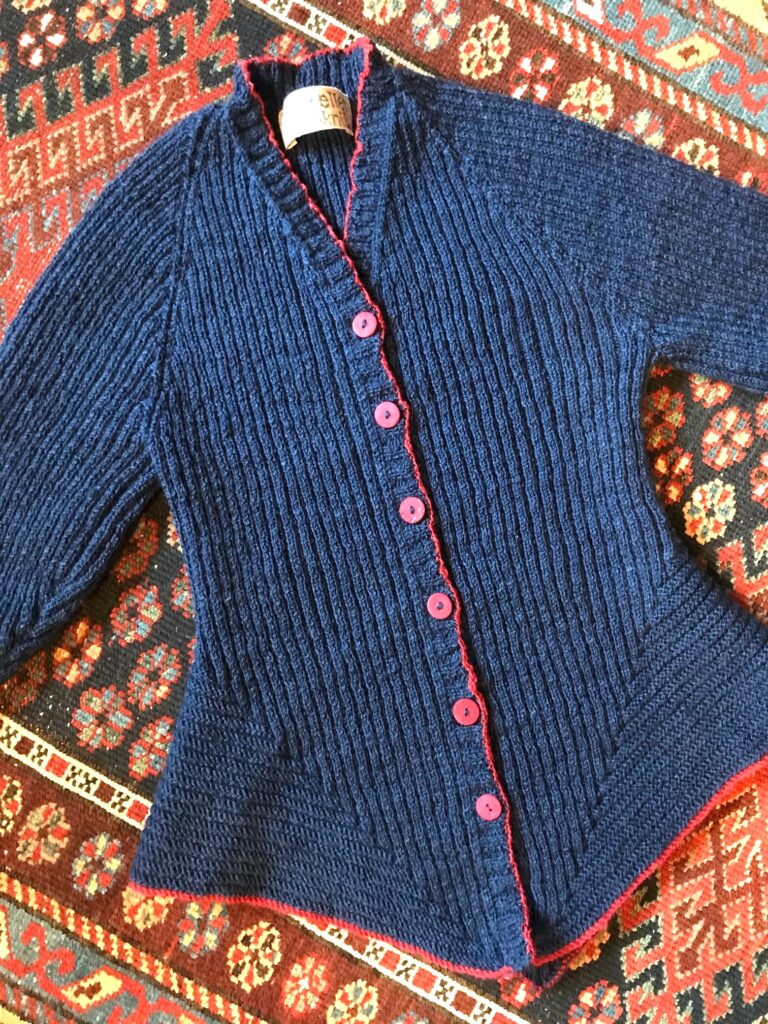
Stitches for shaping
Alison Ellen
Description
Different stitches in knitting produce different textures and patterns, but also affect the way the fabric pulls up, pulls in, makes it thicker or thinner, and therefore can be a great design tool for shaping your designs from within the structure.
We will experiment with some basic stitches used to create shaping, which could also be used to shape modular (domino) knitting, which is usually seen in garter stitch, and entrelac stitch (usually stocking stitch), so even these ways of knitting in building blocks can be shaped to make more fitted garments.
A handout will be supplied to give clear structure to the workshop, with exercises to start people off, and to take away as reference and to continue in their own time.
Skills required
This workshop is accessible for all levels of knitting.
Preparation
Please bring yarns for sampling, plain not textured (so we can see the stitches), and needles in suitable sizes for your yarn. A crochet hook may be useful, scissors and a notebook.
The tutor will have needles and crochet hooks to borrow.
About the speaker
Alison has run a small business designing, producing and selling hand knits since the 1980s with the help of knitters in the UK, dyeing her own yarns to produce a rich range of colours.
Having trained in textiles, she approaches knitting as a way of making a fabric and building a seamless garment. She enjoys the challenge of creating pieces that will be a joy for every body to wear (we are all different!), an important aspect highlighted by interactions with customers at craft fairs.
She shares her ideas in the UK and abroad through exhibitions, lectures, teaching and her books, encouraging people to experiment with knitting and have confidence in exploring and designing.

Beginner
Room
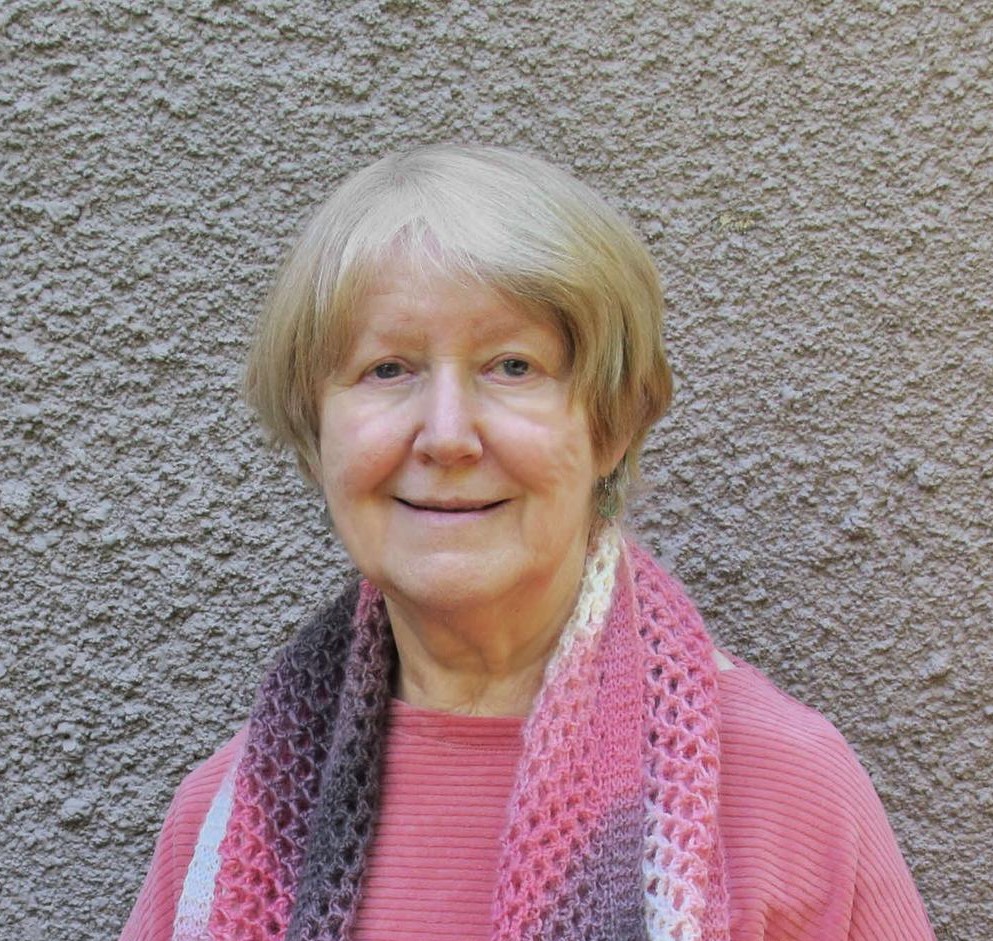
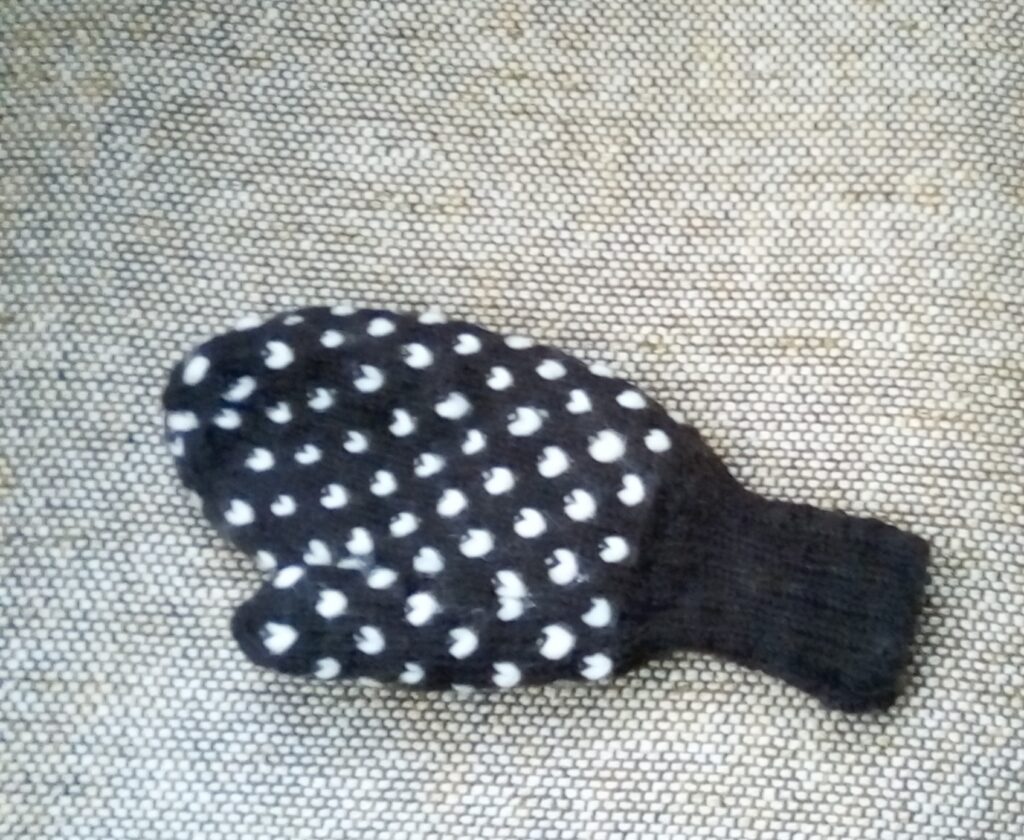
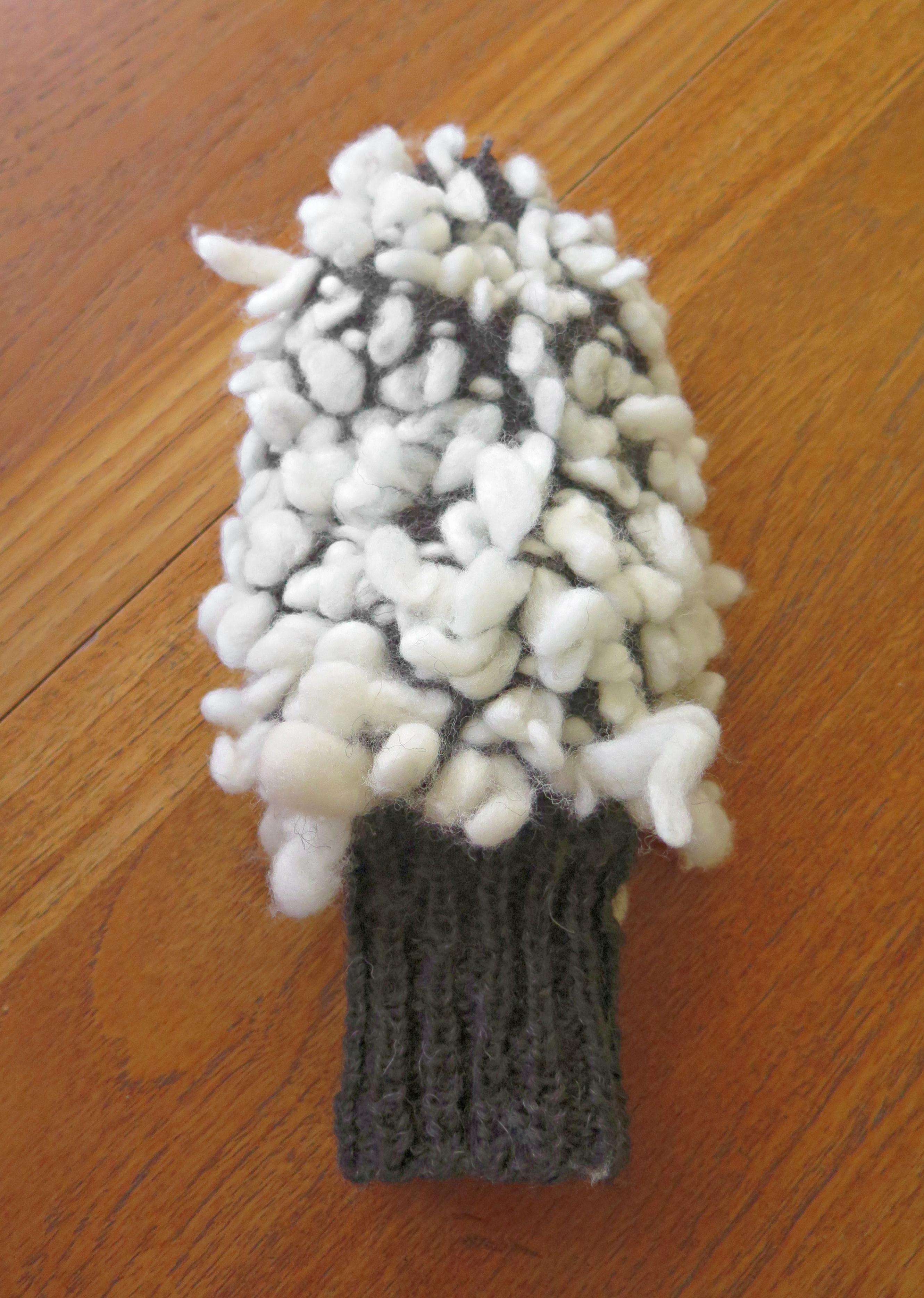
An introduction to thrummed knitting
Clare Griffel
Description
You will take a look at the tradition of thrummed knitting, which incorporates small pieces of unspun wool into the knitted fabric, so as to produce a warm felted lining to an item. You will be able to practice creating thrums from wool tops, and will make a start on knitting a pair of thrummed wrist-warmers.
Skills required
Cast on, knit and purl.
Preparation
Please bring:
- a skein of aran yarn,
- a pair of 4.5 mm straight needles.
- Clare will provide the fleece for the thrums.
If possible, cast on 36 stitches and work a couple of inches in k1 p1 rib before the workshop.
About the speaker
Clare has been knitting since the age of 7 – a very long time! She particularly enjoys interesting methods of construction and innovative textures. She is also a wet felter, so thrummed knitting provides the ideal fusion of yarn and fleece.
Members can download the workshop notes.

Intermediate
Room
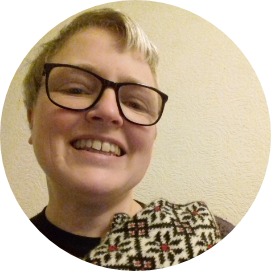
Top-down jumpers – what is helpful to know before I start one?
Rachel Lemon
Description
This workshop will look at the various different forms of top-down jumpers from yokes and raglans to those with fitted sleeves.
We’ll look at the practicalities and you’ll have the chance to practice any of the various knitting techniques which are mentioned.
Skills required
Cast on, knit, purl, increase and decrease.
Preparation
Please bring:
- Pen or pencil and paper to make notes
- Non-patterned DK yarn
- 4 mm needles.
If possible, please cast on 30 stitches and complete a few rows of stocking stitch, ending with a purl row.
About the speaker
Rachel started knitting in primary school and has never stopped. She particularly loves colour work from colder countries on small needles.

Beginner
Room
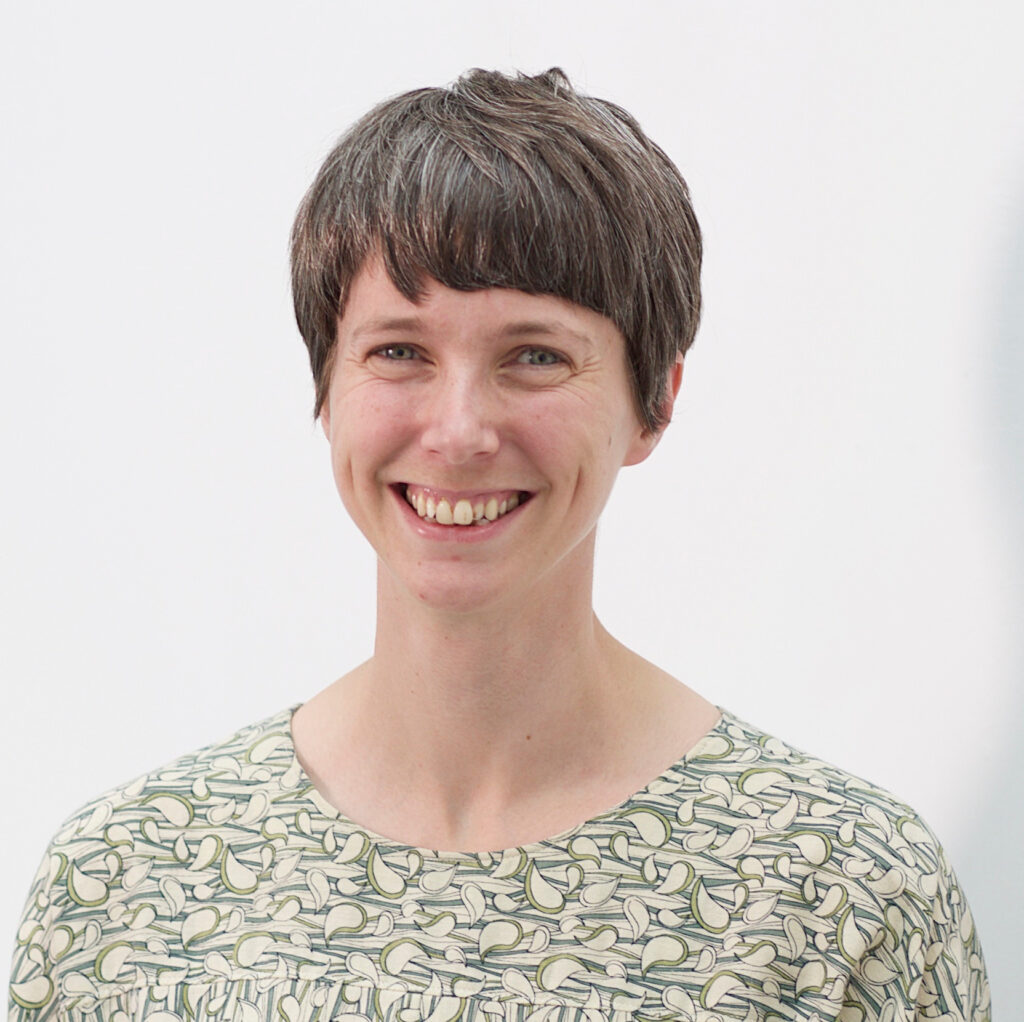
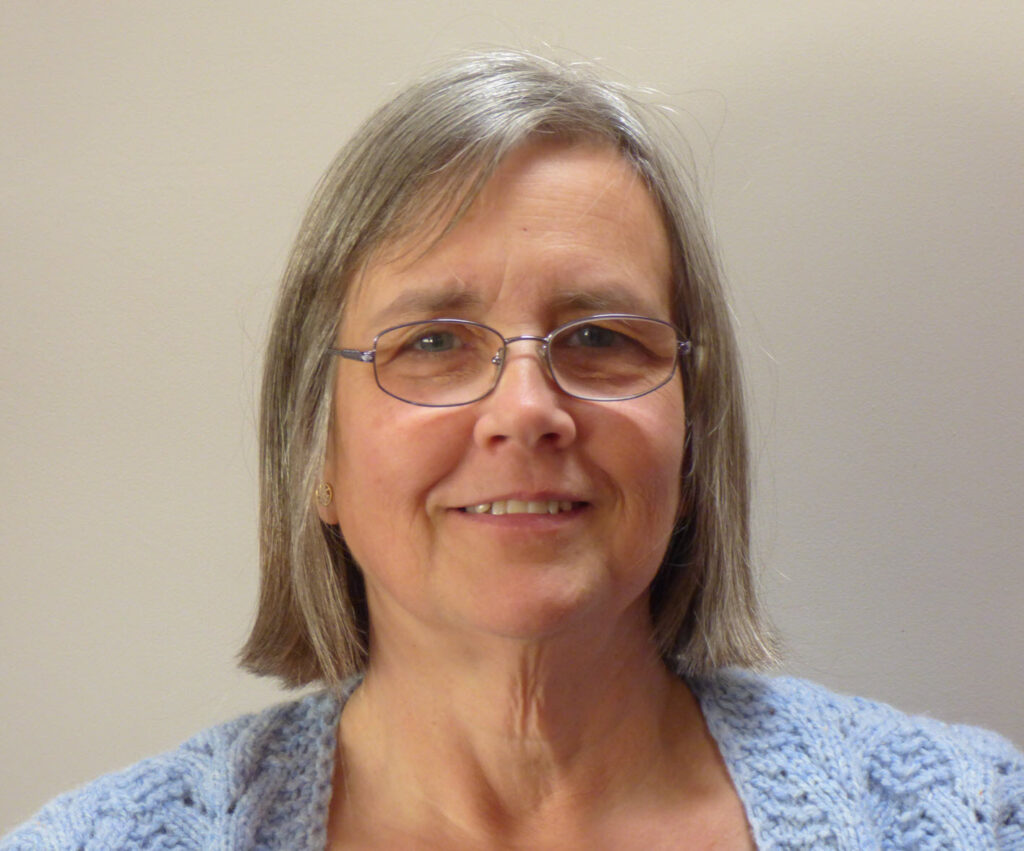
Seamless joining and shaping
Amy Twigger-Holroyd and Alison Peck
Description
One of the key properties of the knitted structure is the ability to create seamless three-dimensional shapes using partial knitting techniques. Building on this knowledge, Amy developed a range of alternative techniques that join pieces seamlessly during the knitting process. These techniques are
versatile: they can be used to join panels neatly, to create seamless gathers, and to embellish fabric with decorative frills and edgings.
Amy will introduce you to these principles – signature techniques of Keep & Share, that she’s been playing with for the last ten years – and guide you in producing sculptural and seamless samples with many potential applications.
Skills required
Basic knowledge of machine knitting. The ability to cast on and knit stocking stitch
Preparation
Nothing. Machines, yarn, tools and other materials will be provided. You may wish to bring a notebook. If you prefer to bring your own machine, please get in touch to find out if this is possible.
Please be aware that long, loose sleeves (particularly knitted garments) may get caught in the carriage. Short sleeves, close fitting sleeves or sleeves that can be ‘pushed up’ out of the way are required.
About the speakers

Beginner/ intermediate
Room
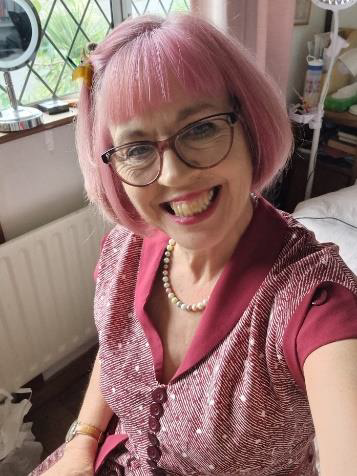
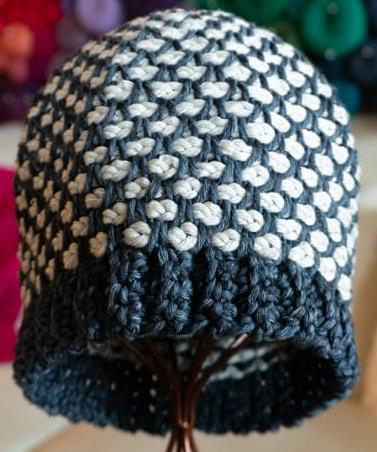
Tunisian Crochet on a Double Ended Hook
Lindy Zubairy
www.yocrochet.co.uk
Description
In this workshop, you’ll make a flat square of ‘brioche’ style work using the double ended hook and two colours, experimenting with a variety of effects. You will, then, move on to working in the round.
Skills required
At the very least, you need to be able to create a crochet chain and work a traditional double crochet stitch before you start. Ideally, you will have already had some practice at Tunisian crochet and know the simple, purl and knit stitches.
Preparation
Bring:
- A double ended hook
- two contrasting colours of yarn appropriate to it.
Bear in mind that with Tunisian crochet, the hook should be at least two sizes up from the one you would use for the yarn weight in traditional crochet. That is, if you are using DK, you’ll need a 6 mm hook; aran, at least a 7 mm; and chunky, at least an 8 mm. Try www.purplelindacrafts.co.uk to buy hooks online. Make sure the hooks are the same size both ends.
A notebook would be good too, though, there will be a recap handout of what is covered in the workshop for you to take away.
About the speaker
Lindy has had a number of Tunisian Crochet Designs published in the crochet press over the years and taught weekend residential courses in Beginners and Improvers Tunisian at Denman – the college of the WI.
She designed and produced the ‘Let’s Get Together Wrap’ as a Tunisian Crochet-a-long exclusively for the KCG during the first few weeks of lockdown, a project that introduced many members to the basic stitches (and beyond) via a series of videos published via Facebook.

Beginner/ intermediate
Room

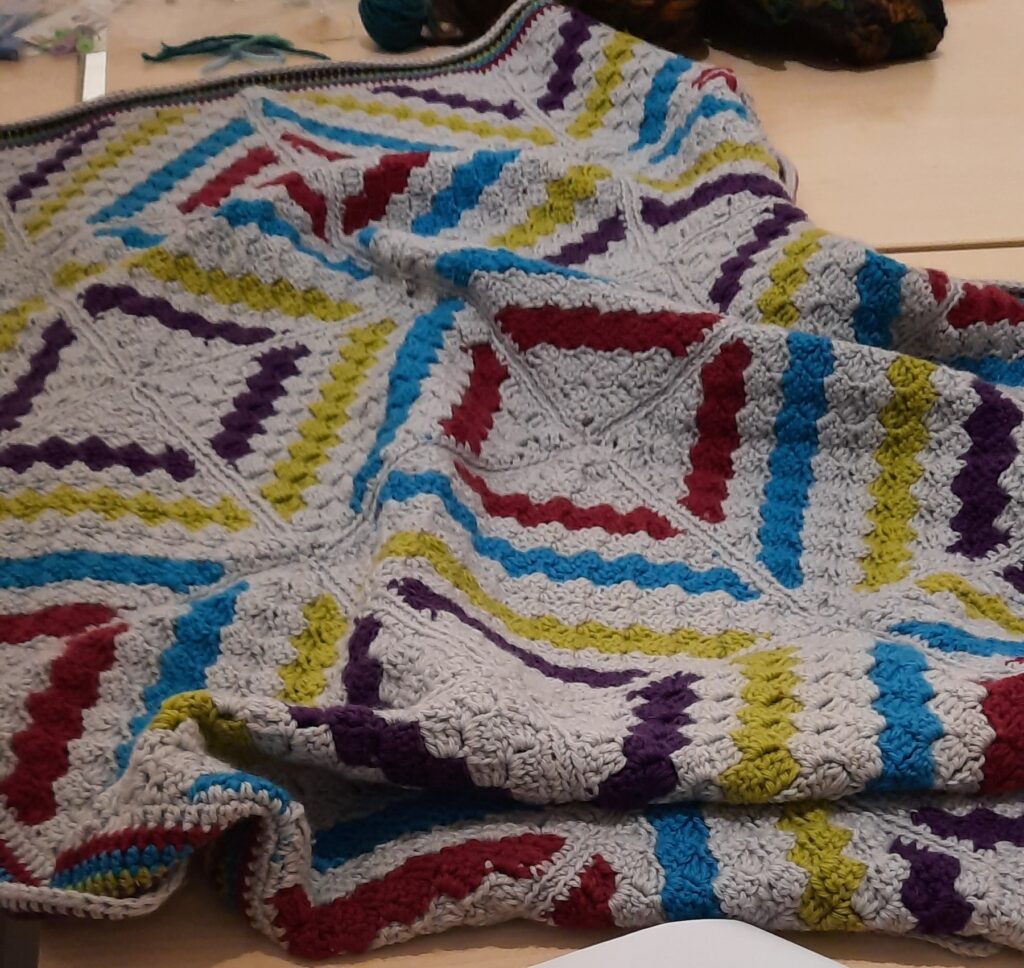
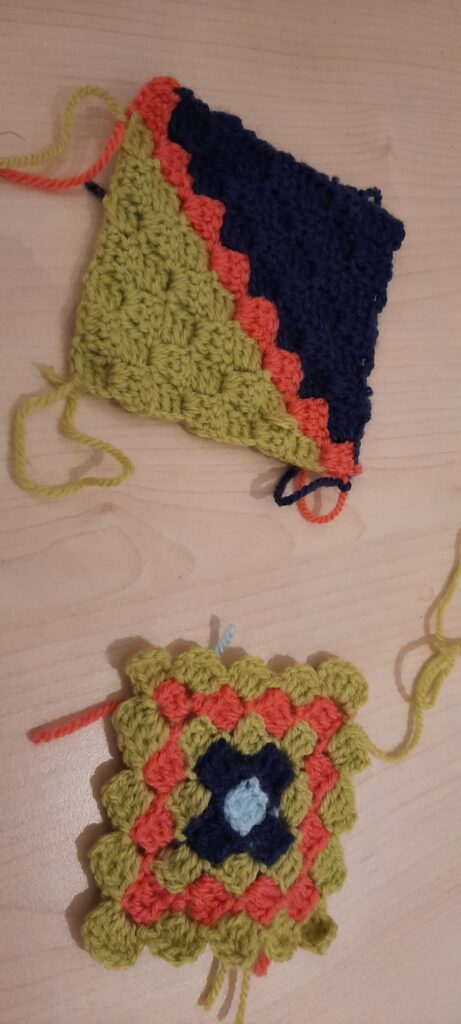
Corner to corner crochet
Kelly Ferguson
Description
Corner to corner crochet or c2c as its commonly known is a fairly new crochet technique and is based on various slanting diamond or brick patterns. For this reason, is a popular technique for making Afghans especially those with geometric or pixelated designs (graphgans), but you can also use it to make other square or rectangular items such as dish cloths and scarves.
The process uses a combination of chains and treble crochet (UK terminology) stitches to create small squares that you connect using slip stitches. Instead of beginning with a long foundation chain, each block is made individually and worked diagonally increasing or decreasing to form the shape required.
The workshop will cover the basics of c2c crochet including increase rows, decrease rows and colour changing.
Skills required
Attendees should know how to chain, slip stitch and treble crochet.
Preparation
Please bring:
- double knitting or aran weight yarn in a variety of colours
- a crochet hook appropriate to the weight of yarn being used (4mm or 5mm)
About the speaker
Kelly Ferguson is a self confessed craft addict, enjoying both yarn and fabric crafts. She was taught to knit at a young age by her gran who was a prolific knitter. She does however much prefer crochet, and is self taught, using a variety of sources such as online tutorials and books as well as well as taking the International Crochet Diploma.
In the twelve years she has been crocheting, she has enjoyed learning the variety of techniques, her favourites being Tunisian and Mosaic crochet. She joined the Knitting and Crochet Guild about four years ago and is currently the Leeds Central Branch Co-ordinator. You may also recognise her from a couple of videos we made for the 2020 unconvention about the Gladys Sampler and Knitted Leeds. Please do ask her about either or both.

Intermediate
Room
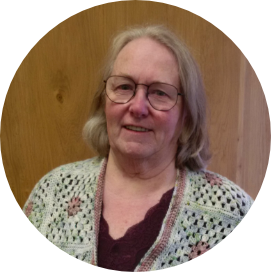
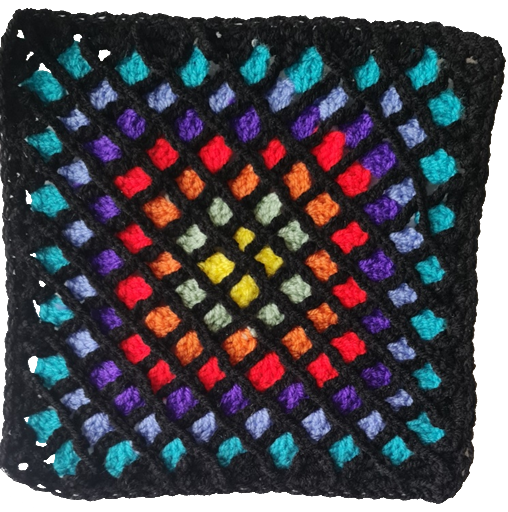
Stained glass window
Margaret O’Mara
Description
Learn how to crochet this beautiful stained glass window (lattice) effect.
Skills required
Attendees should know how to chain, slip stitch, double, half-treble and treble crochet.
Preparation
Attendees need to bring a 7 row granny square with a chain between clusters and 3 chains at each corner. Each row is to be a different colour or using one ball of colour-changing yarn will do.
Please also bring:
- Seven bright DK yarns from your stash, (or variegated yarn)
- Black or dark grey DK yarn
- 4.5 mm and 4.0 mm crochet hooks
- Tapestry needle for sewing in all your ends
About the speaker
Margaret O’Mara has been crocheting for just over 50 years, and the last 30 includes teaching in several venues, including South Notts College (its name when she taught there). She holds the Practical Diploma in Crochet, Master of Advanced stitches and Techniques from the USA, and teaching certificates to teach adults from both the USA and the UK. She enjoys teaching people tips they might not have come across that can improve the look of their work.
Members can download the workshop notes.
4:30 – 5:30 pm – Keynote

Room
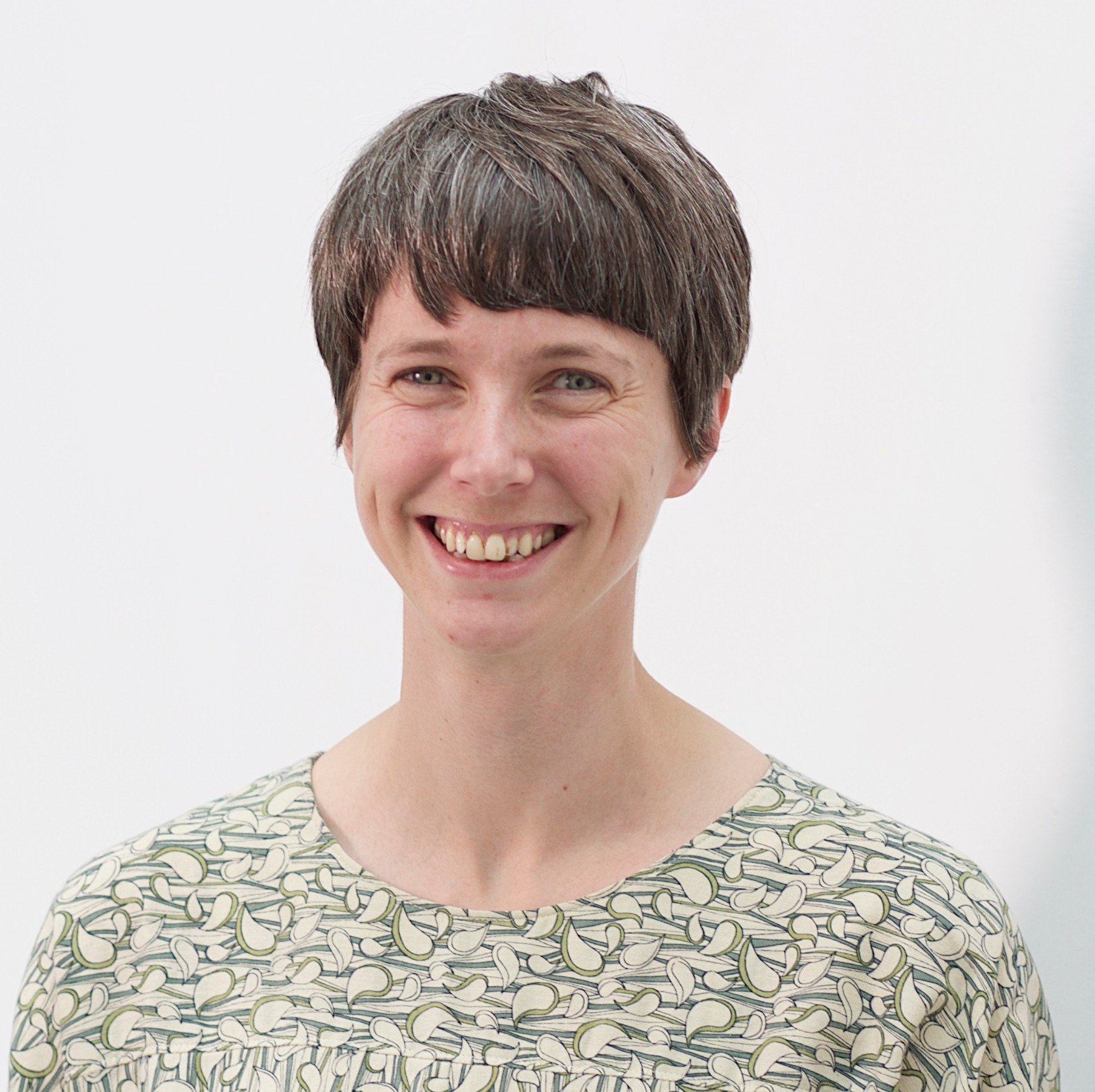

Reknit Revolution: adventures in knitting and sustainability
Amy Twigger-Holroyd
Description
In this talk Amy Twigger-Holroyd will present twenty years of exploring sustainability through knitting – including early encounters with the high-street industry, the development of her ‘craft fashion’ knitwear label Keep & Share, varied experiences of supporting others’ making practices, her move into academic research, and her current Fashion Fictions project.
She will particularly focus on her research into reknitting: the use of knit-based skills, techniques and knowledge to rework the items in our wardrobes. This practice has a long history, but needs to be reinvigorated for the contemporary context.
From Amy’s perspective, every stitch is a unit of possibility, ripe for reconfiguration, and reknitting can be a radical and transformative act. All are welcome in the ‘Reknit Revolution’!
About the speaker
Dr Amy Twigger Holroyd is a designer, maker, writer and researcher, and Associate Professor of Fashion and Sustainability at Nottingham Trent University.
Saturday 9 September – evening Show & Tell (select to expand)
7:00 pm onwards – evening events

All levels
Room
Show & Tell
Speaker
Description
Our popular Show & Tell returns to give you another chance to show off your creations to other crafters.
We encourage you to bring something with you that you would like to show others and show with a few words of explanation, but you are welcome to come and just watch.
Preparation
Please think of what you want to tell us about the item(s) you show.
Fringe events
- Branch Coordinators’ get-together
Yarn amnesty
Bring yarn you no longer need, buy yarn that tempts you! Proceeds go to Guild funds.
Market place
If you would like a stall in the market place please contact convention@kcguild.org.uk so that we can discuss availability of space.
Sunday 10 September – morning Workshops (select to expand)
Please vacate your room by 10 am.
9:30 am – 11:55 am – Workshops (includes 25 minute break)

Beginner
Room
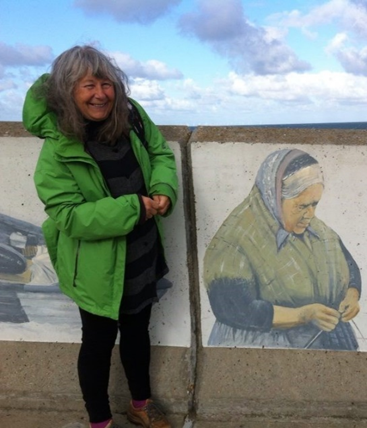
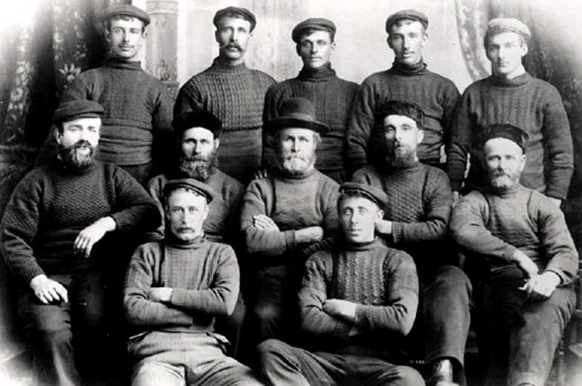
Design a gansey
Rita Taylor
www.heritagehandknits.co.uk
Description
Because ganseys are all virtually the same square shape the interest comes from the textured designs featured on them. There were no written patterns and the knitters made up their own motifs according to the requests from their clients or family members.
This is what you will be encouraged to do in the workshop. Then you can knit a sample of all or part of it, either at the workshop or later.
Skills required
Cast on, knit and purl.
Preparation
Please bring:
- 2.75 mm needles (straight, DPN, circular)
- if you have some 5-ply yarn please bring it along.
Rita has kindly agreed to bring some Frangipani wool for participants to use, but if you already have some 5-ply, please bring about 25g so we can see how different yarns impact on the fabric we create.
About the speaker
Rita has been knitting ganseys for at least 20 years and is also examining and cataloguing them for Sheringham Museum.

Beginner
Room
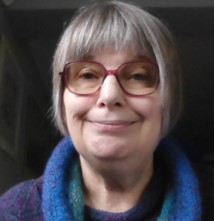
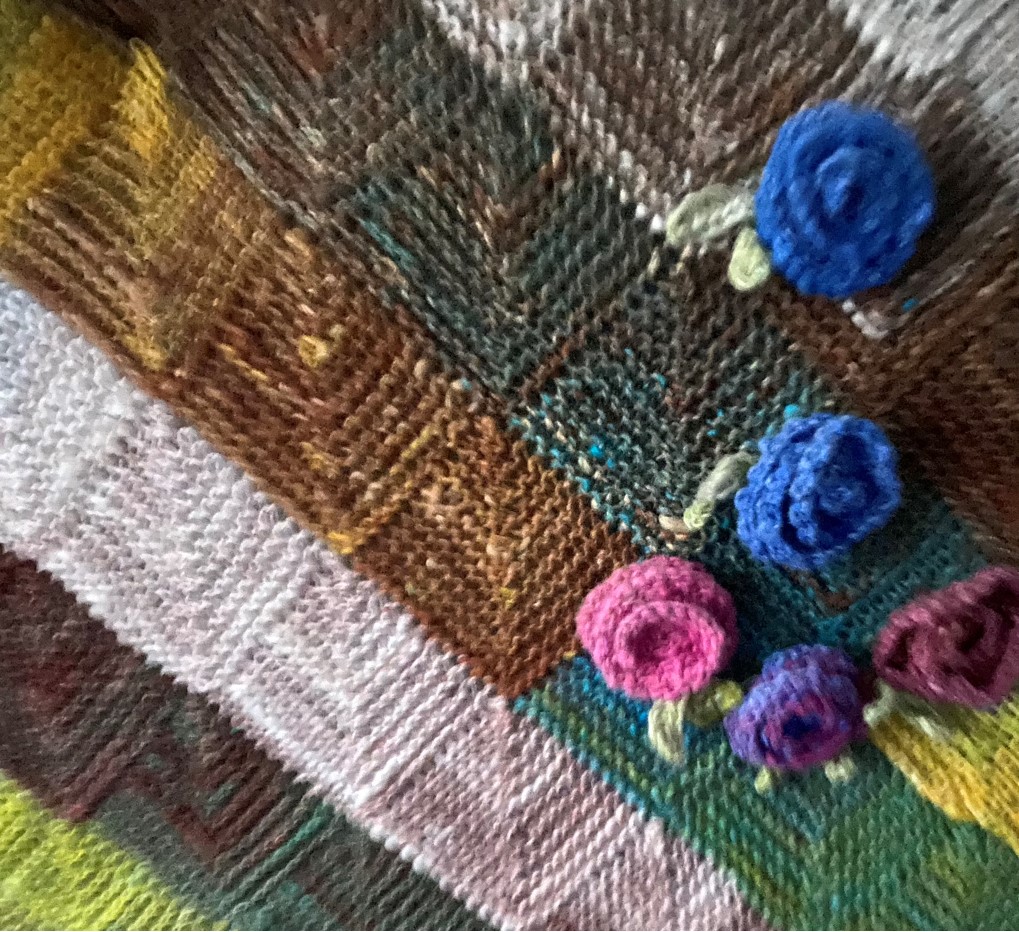
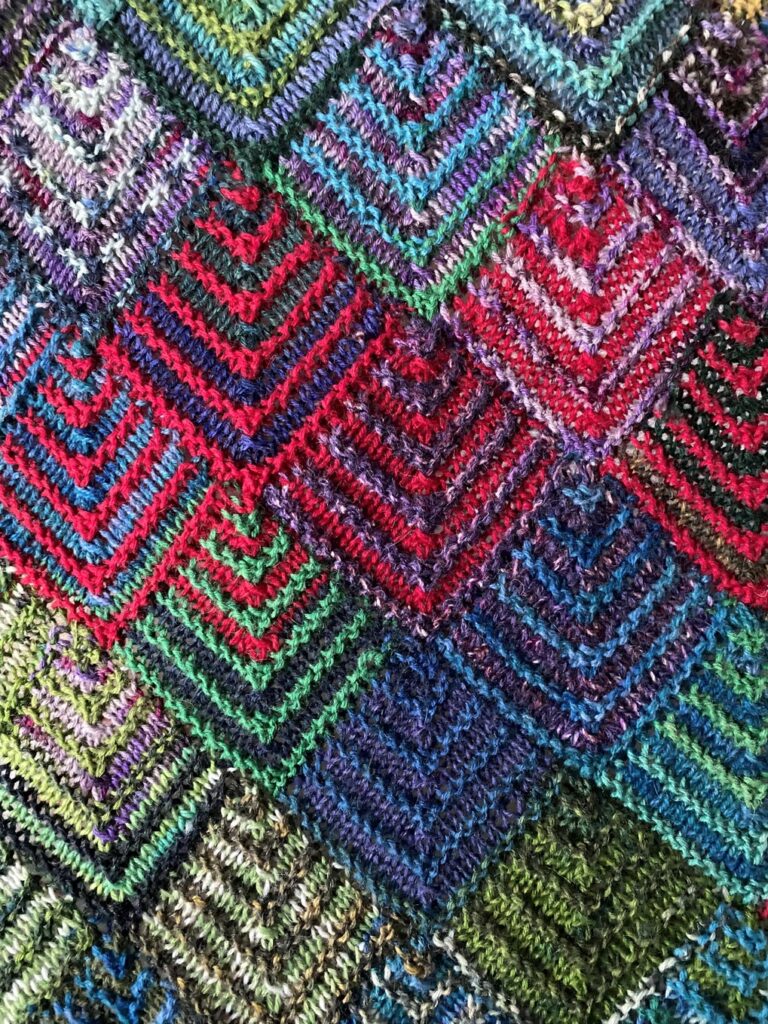
Patchwork knitting
Lynda Fiendley
Description
About fifteen years ago Lynda came across patchwork knitting, and has used it many times since. Lynda love these features: it is
- simple
- multidirectional
- good for using remnants of yarn
- good use of colour.
Lynda has since made wall hangings, bags, neck warmers, waistcoats and cardigans using the technique.
During the workshop we will use basic mitred squares to make a bigger piece: skills acquired will be joining the squares, as well as following the instructions for the basic square. Lynda will also provide the basic instructions and several patterns and suggestions for items to be made.
Skills required
Cast-on, knit and purl.
Preparation
Please bring:
- small quantities of yarn in different colours (4-ply or DK; wool or acrylic)
- Needles suitable for the yarn.
About the speaker
Lynda Fiendley is a retired teacher, with a lifelong passion for fibre crafts, including spinning, weaving, crochet and hand and machine knitting. Hand knitting is her primary interest, and she have been practising it for over sixty years.
Members can download the workshop notes.

Intermediate
Room
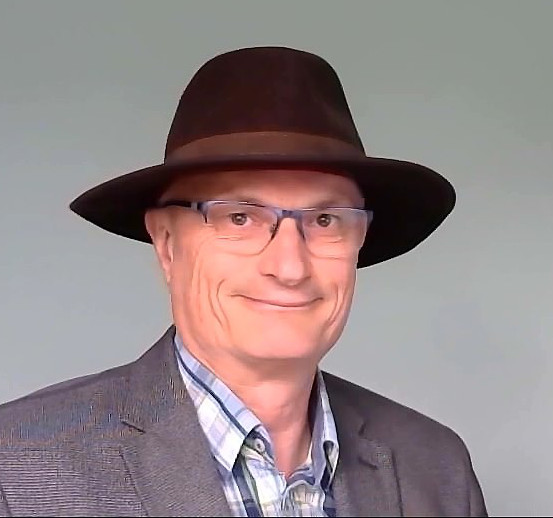
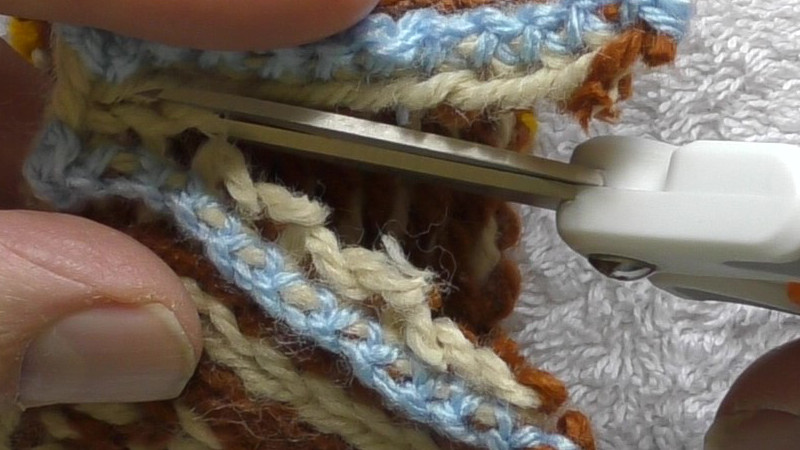
Eek a Steek!
Steve Foreman
teabreakknitter.uk
Description
A steek is a vertical cut in knitted fabric. Stranded knitting jumpers often use steeks to allow the to be knit in the round and the fabric is then cut to open the arm holes. Steeks can also be used to convert jumpers to cardigans.
This workshop aims to take the fear out of cutting your knitting – and encourage you to think of scissors as your friends. We will explore how to plan your steeks, how to knit your fabric to make cutting a steek easier, several methods of reinforcing the area round the steek, picking up stitches for button bands and sleeves, and wielding the scissors.
Skills required
You will need to be able to cast on, knit and purl, and cast off. Ideally you will be able to knit stranded colour work in the round, but you can still be able to take part if you can only knit flat in a single colour.
Preparation
You will need to bring:
- 4mm knitting needles. Circular or DPNs if you knit in the round.
- DK yarn in four colours (only about 5g of each; two colours if you are knitting flat).
- 4 removeable stitch markers.
- A 2.75mm crochet hook.
- A metre or two of 4 ply yarn.
- Sharp scissors.
- Paper and pen/pencil for notes.
About the speaker
Steve started knitting when he was working away from home as a way of “turning off” in the evenings. He always has several projects on the go – and always one that contains something new. He learned stranded knitting by tackling a Fair Isle jumper with all-over motifs and, of course, steeks. Not a fan of stranded knitting in the flat (or weaving in ends) he has adapted other patterns to use steeks – including an acrylic cardigan for a grandchild that was worn daily until outgrown.
Members can download the workshop notes.

Intermediate
Room


Christmas is coming
Pat Banyard-Smith and Alison Peck
Description
Of course, you can knit Christmas gifts (woolly hats and scarves, for example) for family and friends … but that isn’t really what this workshop is about. Instead, we’re going to be looking at a few specific techniques but using them on a small scale. You can adapt them to something bigger at a later date.
The options available include:
- Knitting a small stocking to hang on the tree (chocolate for inserting not provided!) or a slightly larger version for a wall decoration. You’ll practise short-row shaping.
- Making Christmas cards using single-motif with some embellishment (beads, for example).
- Working on an advent calendar – adding pockets to a piece of knitting.
Skills required
Basic knowledge of machine knitting. The ability to cast on, knit stocking stitch and cast off.
Preparation
Nothing. Machines, yarn, tools and other materials will be provided. You may wish to bring a notebook. If you prefer to bring your own machine, please get in touch to find out if this is possible.
Please be aware that long, loose sleeves (particularly knitted garments) may get caught in the carriage. Short sleeves, close fitting sleeves or sleeves that can be ‘pushed up’ out of the way are required.
About the speaker

Beginner/ intermediate
Room

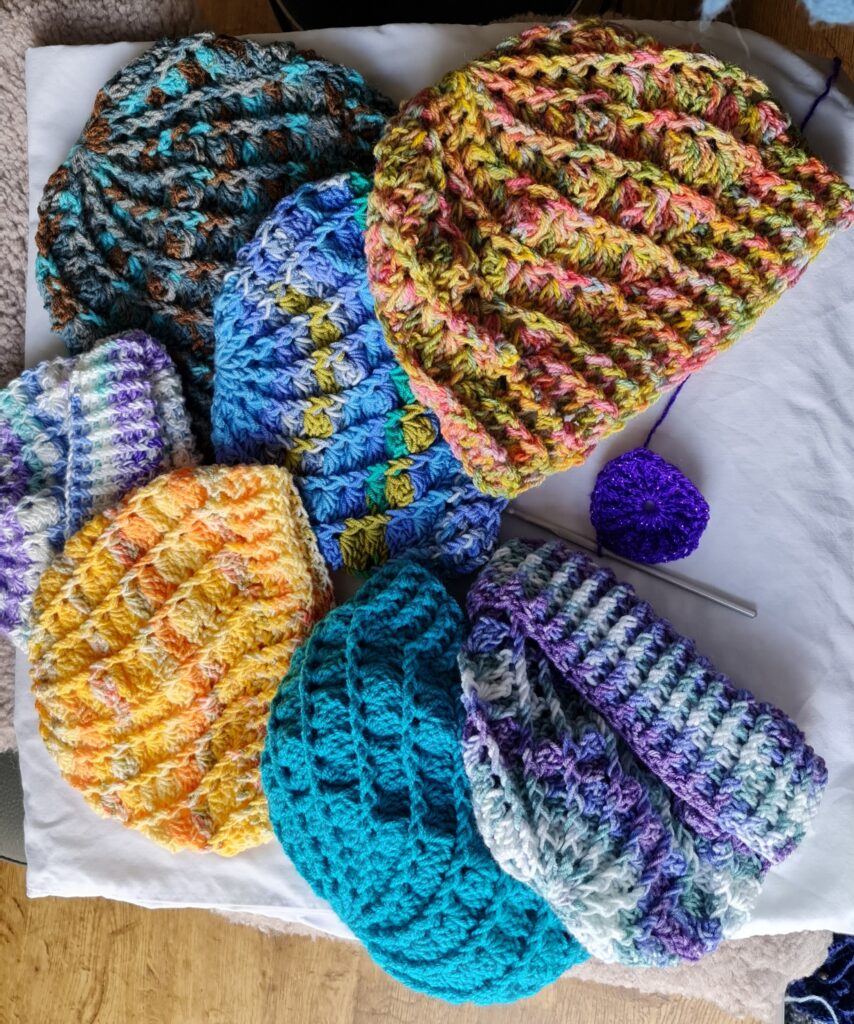
My interpretation of the Divine Hat
Margaret O’Mara
Description
Learn how to crochet Margaret O’Mara’s Divine hat.
Skills required
For competent beginners/ intermediate crocheter, It will be an advantage if you know how to do front and back post stitches, Most other stitches are trebles.
Preparation
Please bring :
- 5.00 mm crochet hook
- 100 gram ball of double knitting yarn. You only need 70 g, but for longer hat, or turn up brim you will need more yarn.
About the speaker
Margaret O’Mara been crocheting for just over 50 years, the last 30 includes teaching in several venues, including South Notts College (its name when she taught there). She holds the Practical Diploma in Crochet, Master of Advanced stitches and Techniques from the USA, and teaching certificates to teach adults from both the USA and the UK. She enjoys teaching people tips they might not have come across that can improve the look of their work.
Members can download the workshop notes.

Intermediate
Room
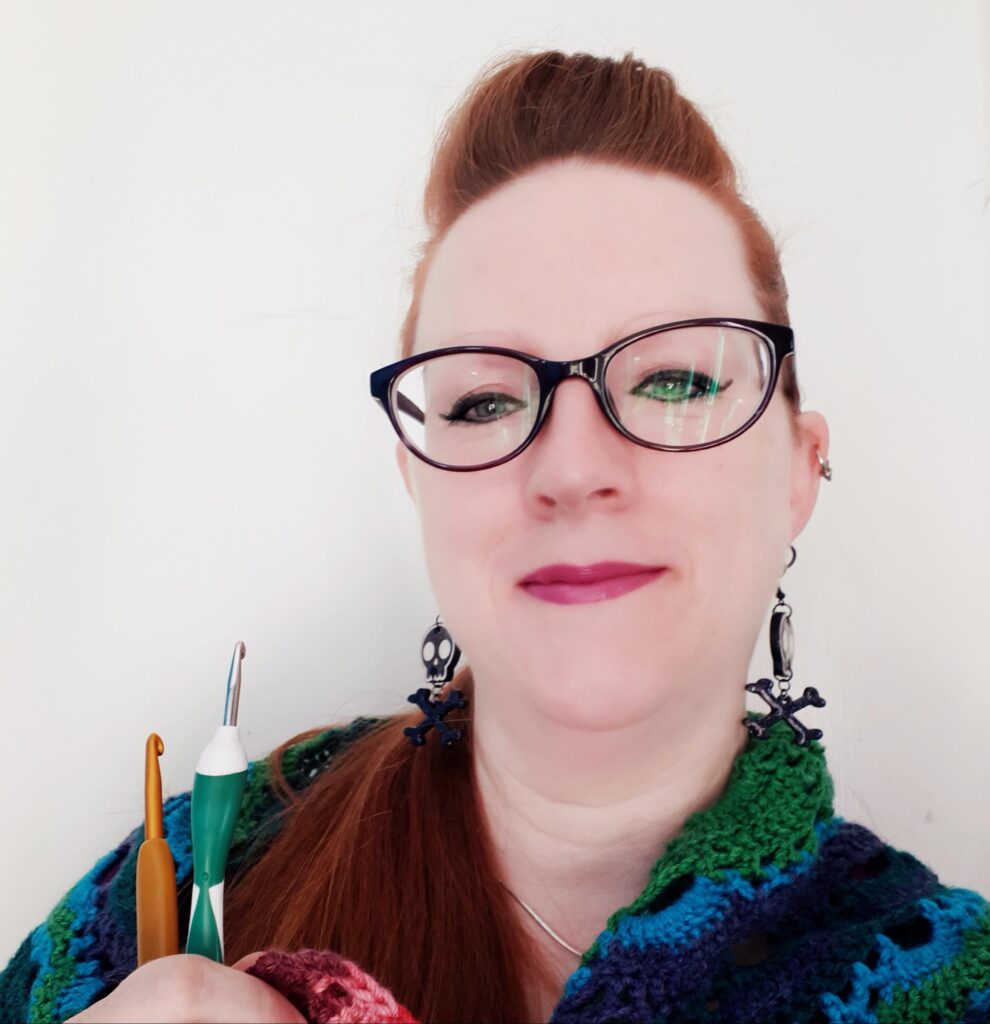
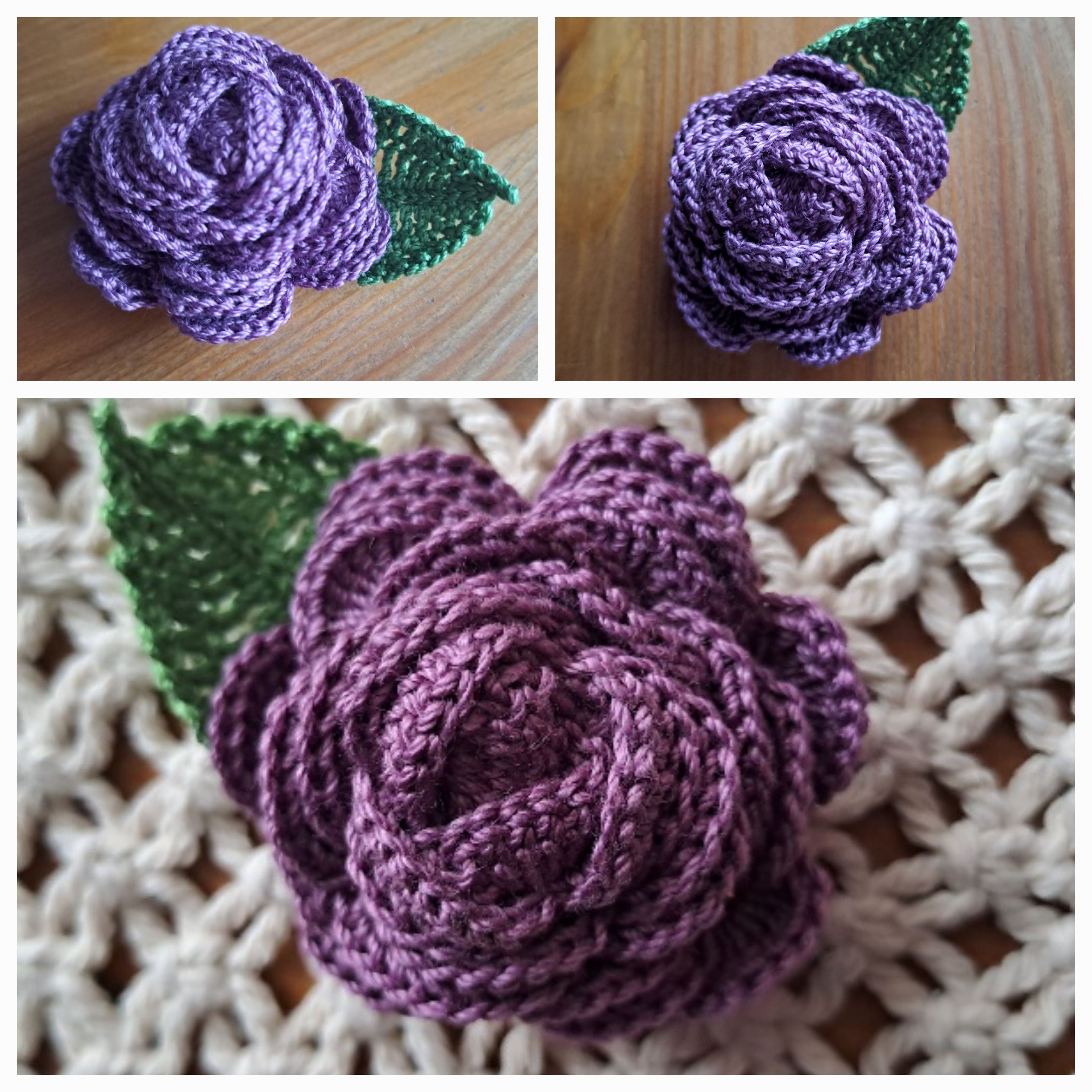
CANCELLED: Crochet rose
Marianne Penny
www.facebook.com/pennystitchcraft/

Beginner
Room

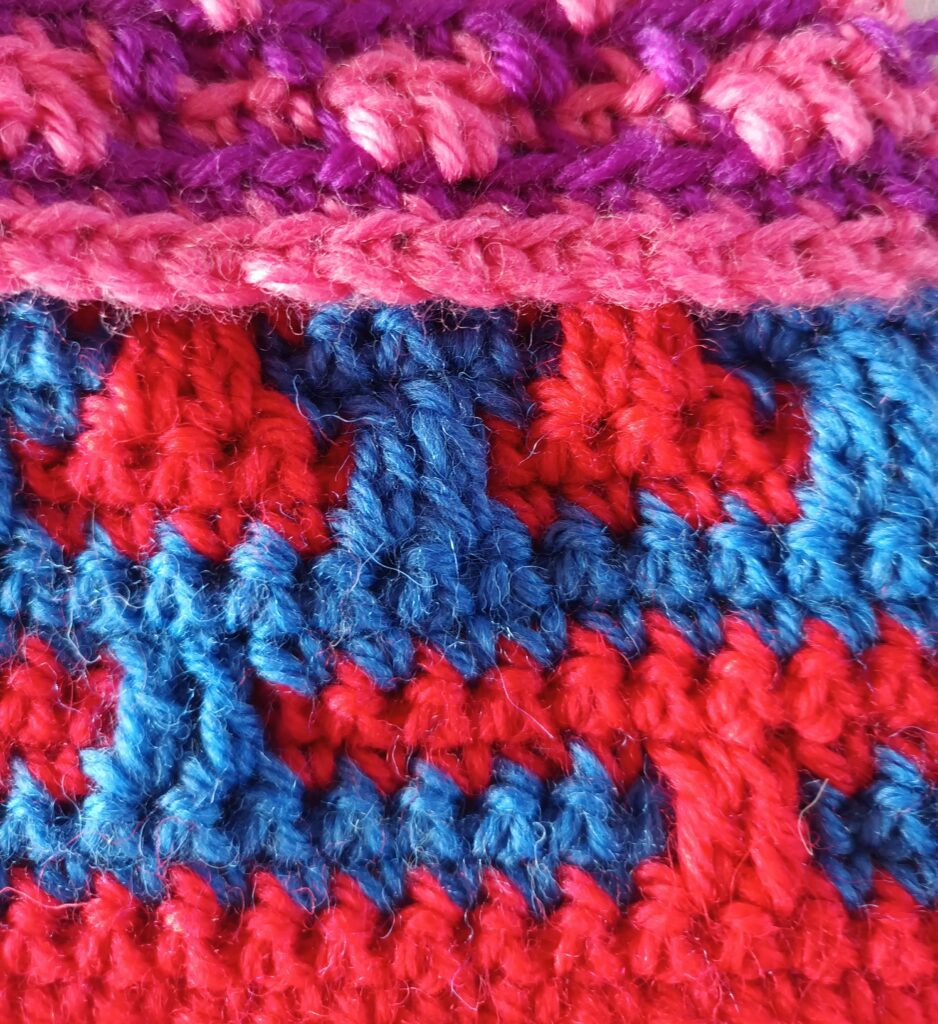
Mosaic crochet
Helen Jordan
www.threadoflife.co.uk
Description
Mosaic crochet is an interesting colourwork technique; the photo shows my first attempts at the process, so you can see that it’s not difficult to learn.
There are two ways of working Mosaic Crochet and you will get a handout to remind you how to work each of them.
Skills required
This workshop is suitable for anyone who is confident in working the basic crochet stitches: chain, double-crochet and trebles.
Preparation
Please bring:
- Two contrasting colours of the same weight of yarn;
- Crochet hooks suitable for the yarn weight.
For example, double-knitting yarn and 4.5mm or 5.0mm crochet hook.
About the speaker
Helen has been a Guild member for over 30 years. She runs the Thread of Life crochet supplies business and has brought her goods for sale to many Knitting & Crochet Guild Conventions.
An experienced teacher of all things crochet, Helen is an Associate Assessor for Parts I and II of the three-part International Diploma in Crochet devised and overseen by KCG founder member and life member, Pauline Turner, who has also been inducted into the CGOA Hall of Fame.
Using her mischievous sense of humour, Helen eases any concerns that may be felt by the people
she teaches.
Website: www.threadoflife.co.uk
Sunday 10 September – afternoon Talk, raffle and crafting (select to expand)
1:00 pm – 2:00 pm – Talk followed by display

Room
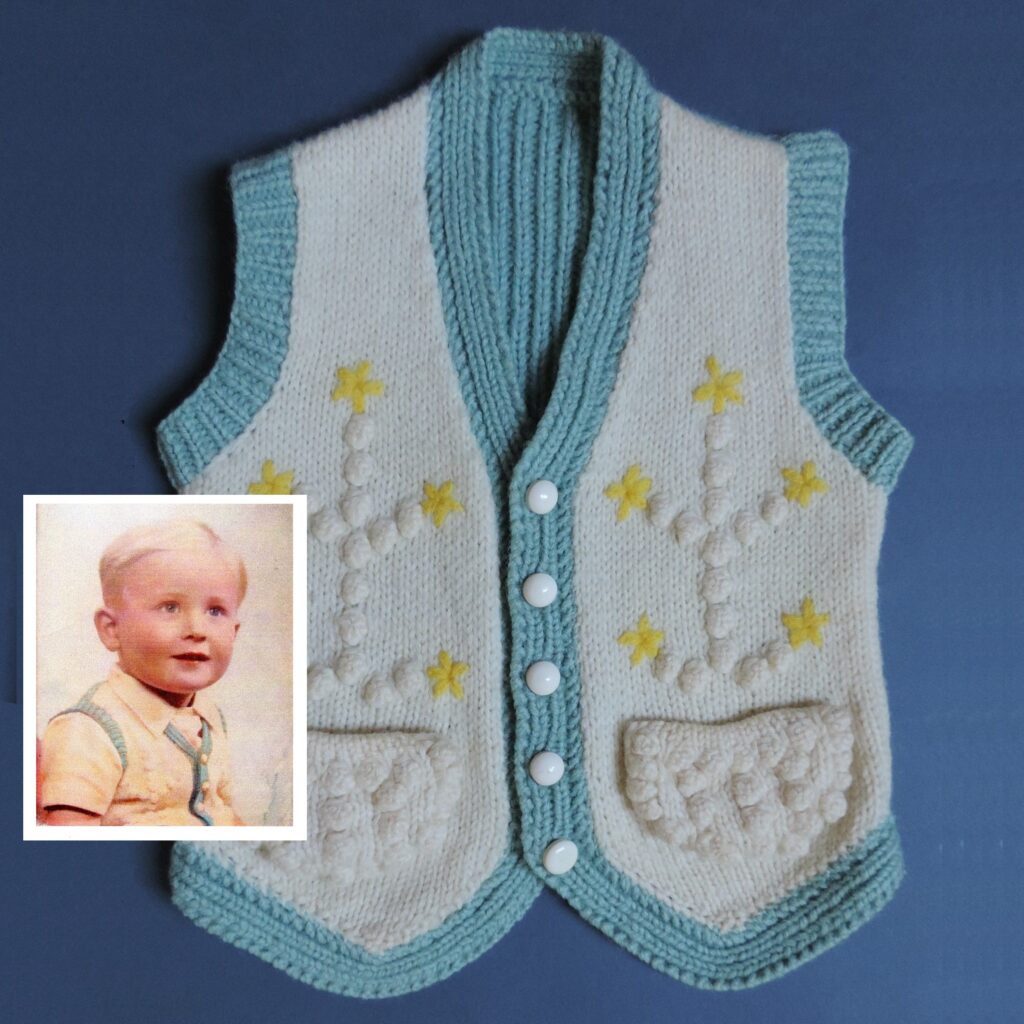
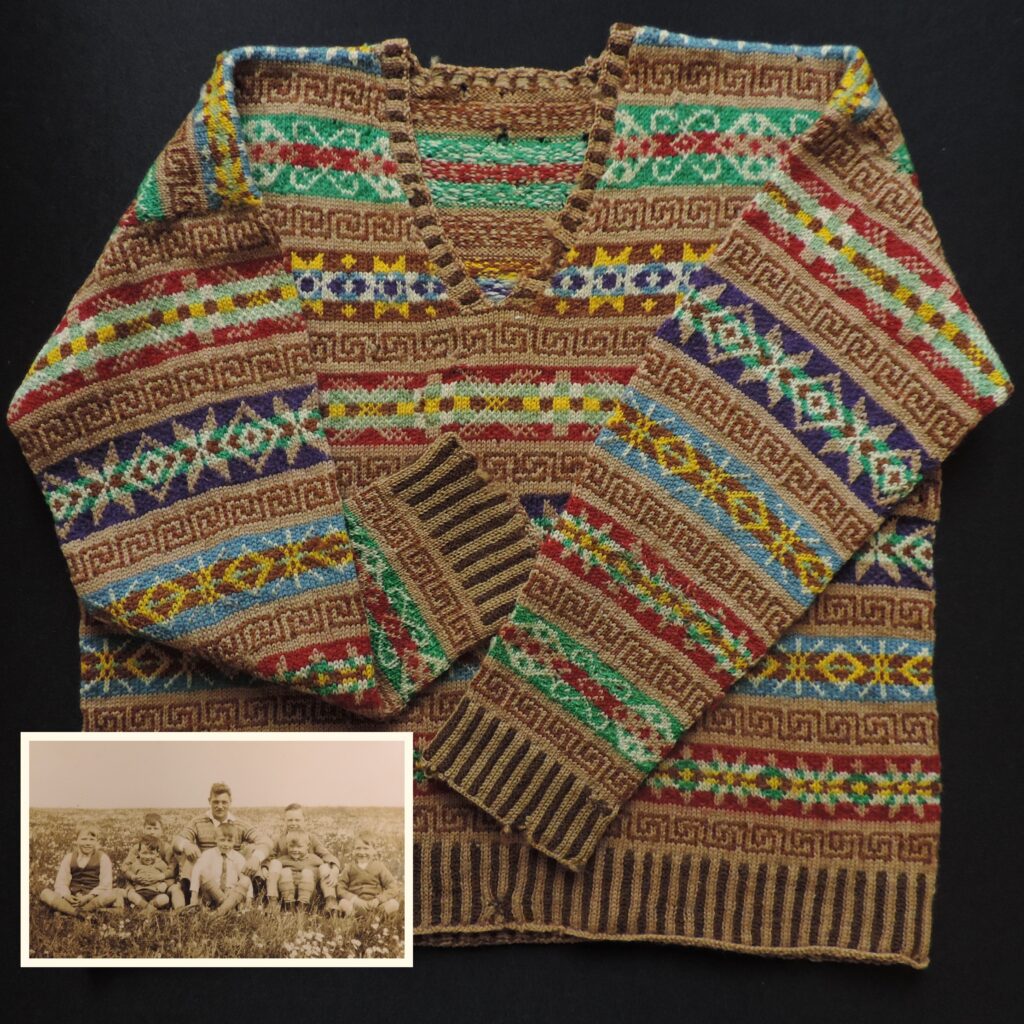
Tales from the Mill
Barbara Smith
Description
The Guild’s Collection is an unparalleled record of household knitting and crochet in this country. Barbara will show the scope of the collection, from publications to textile art, via knitting needles and crochet hooks, and including a few things that you might find surprising. The main part of the talk will show some of the knitted and crocheted pieces in the collection which have rarely if ever been shown and tell their stories. Some of these will be on display for you to examine closely at the end of the talk.
About the speaker
Barbara Smith is the publications archivist for the Knitting & Crochet Guild’s Collection.
2:00 – 2:15 pm – Closing remarks and raffle
We would like to thank the following for their kind donations of raffle prizes:
- Alison Ellen
- Amy Twigger Holroyd
- Angharad Thomas
- Chelsea Green Publishing
- Crowood Press
- Emma Vining
- Helen Jordan
- Knitting Magazine
- Lynda Fiendley
- Margaret O’Mara
- McIntosh
- The Knitting & Stitching Show (Alexandra Palace)
- Veronica Bruton
- Yarn Journal
2:15 – 4:00 pm – Socialising
4:00 pm – Leave the site
Please leave the conference centre by 4:00 pm.
Special offer for those attending Convention
James McIntosh has kindly offered a discount on McIntosh yarns for those attending Convention.
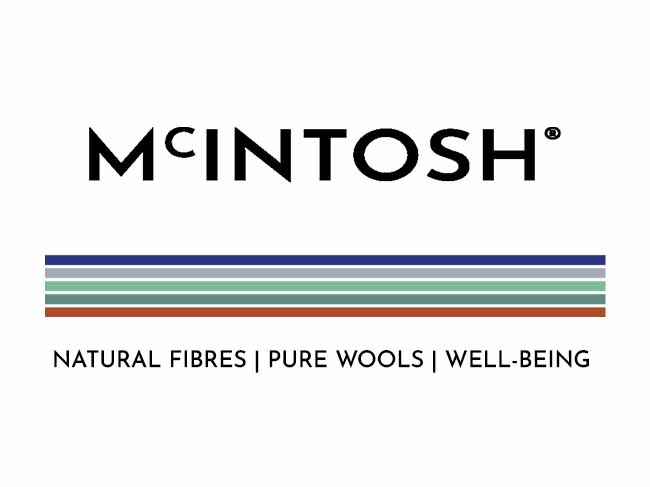 McIntosh – the natural fibre, pure wool and well-being brand offers all Guild members at convention 2023 20% off and FREE UK postage on McIntosh British Bluefaced Leicester (DK and 4-Ply), Donegal Rich Tweed (DK and 4-ply) and ffluff (lace weight) when using the discount code that will be announced in the Welcome session.
McIntosh – the natural fibre, pure wool and well-being brand offers all Guild members at convention 2023 20% off and FREE UK postage on McIntosh British Bluefaced Leicester (DK and 4-Ply), Donegal Rich Tweed (DK and 4-ply) and ffluff (lace weight) when using the discount code that will be announced in the Welcome session.
This offer is only available from 8th to 17th September 2023 at knitmcintosh.com.
All McIntosh wools are hand dyed to order.
Terms and Conditions
Only the above mentioned items are included in the offer. This offer cannot be combined with any other offer or promotion. Can only be used once per customer. Customer must have attended the Guild of Knitting and Crochet convention 2023.
Special video for all members
Rowan have kindly allowed us to show an interview with our Patron Sasha Kagan that was recorded in March 2023. This is available for members to view between the start of Convention and 19 October 2023 by following this link during that period. The link will not work outside that period.

